
Master
College
certificates
cybersecurity and
administration,
are
Project


Master
College
certificates
cybersecurity and
administration,
are
Project
®
FALL 2022 V.27 | N.2
3 PUBLICATION NOTES
4 PRESIDENT’S MESSAGE
6 IN MEMORIAM
7 ESD CORPORATE MEMBERS
8 MEMBERS IN THE NEWS
10 EVENTS AND EDUCATIONAL OPPORTUNITIES
12 UPCOMING EVENTS AND DEADLINES
14 PROFILE: FEV—SHAPING THE FUTURE OF MOBILITY
ESD HAPPENINGS:
20 SEVEN UNIVERSITY TEAMS NAMED FINALISTS IN DTE E-CHALLENGE 5
22 ESD GOLF OUTING
24 AN AMAZING SUMMER FOR GEA!
26 FORD HOSTS GEA STUDENTS AT NASCAR
27 GEA—OFF TO THE RACES!
28 CHALLENGE DAY WITH DTE
29 STUDENTS NETWORK AT “LINK IN THE D”
ESD AWARDS:
30 ESD ANNUAL DINNER AT FORD FIELD
34 ESD CELEBRATES YOUNG ENGINEERS OF THE YEAR
36 JOHN G. PETTY IMAGE AWARD RECIPIENT: THOMAS M. DORAN
39 2022 ESD CONSTRUCTION & DESIGN AWARDS
16 Paying Back, Paying Forward: ESD Member of 58 Years Recalls Teaching Test Prep
BY MATTHEW ROUSH17 49 Years and Counting: My ESD Membership Odyssey BY WILLIAM A. MOYLAN
18 Engineering through the Generations: An Interview with Dr. Richard Marburger, FESD
BY DANA LEFEVRE46 Saving the Old to Help the New: Historical preservation benefits tomorrow’s environment
48 LTU Construction Safety Research Center: First Study Under Way
49 Creating Building Resilience and Occupant Safety to Adapt to a Changing Climate
BY JANICE MEANS54 Detroit Collaborative Design Center
BY SUSAN THWING56 The Curious Connection of an Epidemic, Drinking Water, Human Flight, Greenfield Village, World War, and ESD
BY THOMAS M. DORANCover: Edsel and Eleanor Ford House Visitor Center and Administration Building. See page 42.
Above photo: ESD Girls in Engineering Academy Students visit DTE Laboratories. See articles on pages 24, 26, 27 and 28.
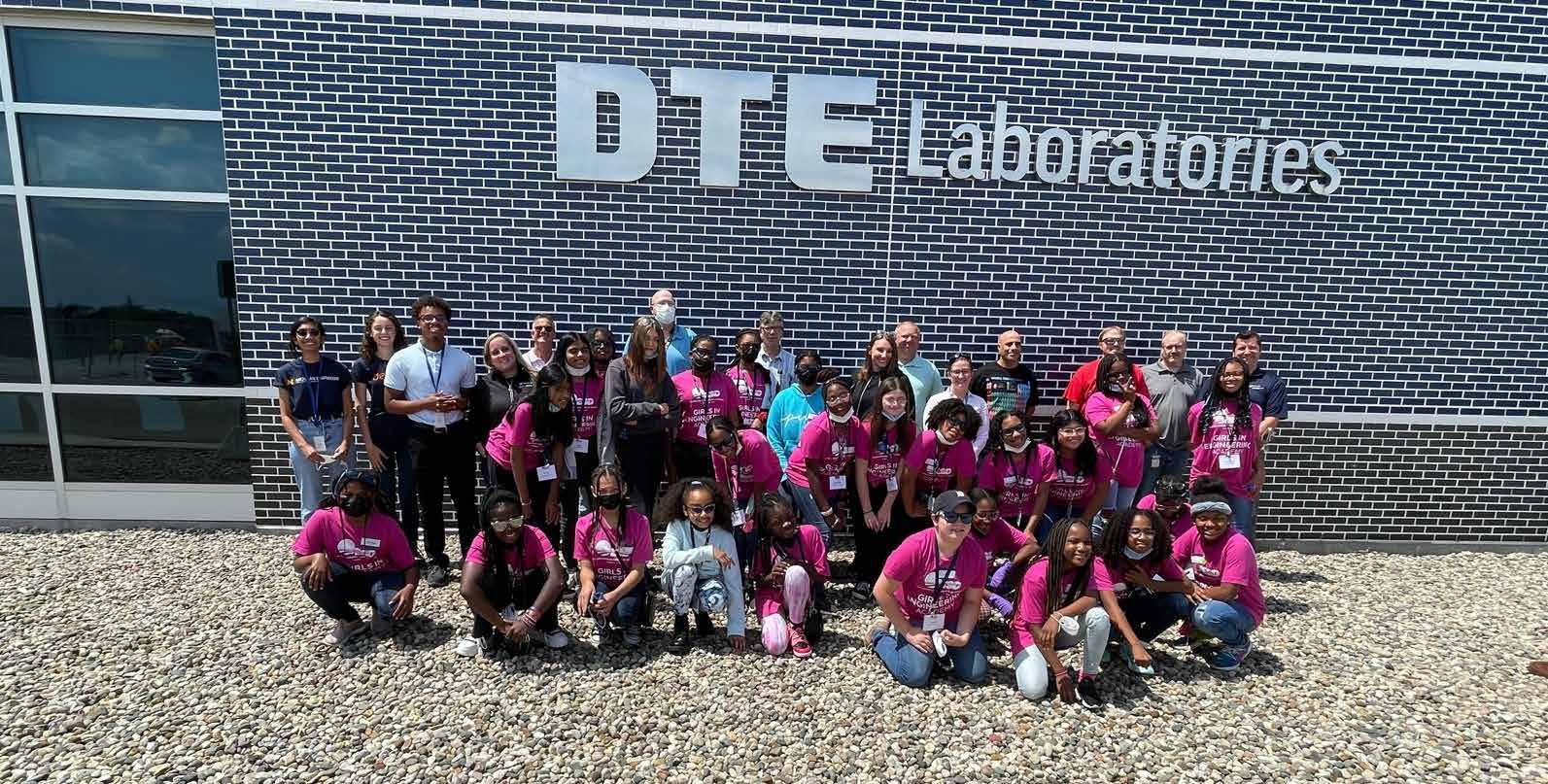
Warrior TechSource
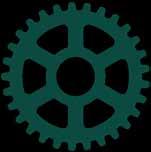



learning ecosystem delivered by Wayne State University and Amesite that connects



with experts,
critical
in real time and
to
in an evolving technological landscape .

V.27 I N.2 Fall 2022
20700 Civic Center Drive, Suite 450 • Southfield, MI 48076 248–353–0735 • 248–353–0736 fax • esd@esd.org • esd.org
CHAIR: Karyn Stickel, Hubbell, Roth & Clark
Utpal Dutta, PhD, FESD, University of Detroit Mercy
Linda Gerhardt, PhD, FESD
Richard, Hill, PhD, University of Detroit Mercy
Dana Marie LeFevre, Student, Michigan State University
William A. Moylan, Jr., PhD, PMP, FESD, Eastern Michigan University
Janice K. Means, PE, LEED AP, FESD, FASHRAE, Lawrence Technological University
Matt Roush, Lawrence Technologicial University
Rajiv Shah, PE, ACSCM
Michael Stewart, Fishman Stewart Intellectual Property
Cyrill Weems, Burns & McDonnell
Yang Zhao, PhD, Wayne State University
PRESIDENT: Kirk T. Steudle, PE, FESD, Econolite
VICE PRESIDENT: Robert A. Richard, DTE Energy
TREASURER: Alex F. Ivanikiw, AIA, LEED AP, FESD, OAC Advisers, LLC
SECRETARY: Robert Magee, The Engineering Society of Detroit
PAST PRESIDENT: Daniel E. Nicholson, PE, FESD, General Motors Company
Paul C. Ajegba, PE, Michigan Department of Transportation
Carla Bailo, Retired, Center for Automotive Research
Katherine M. Banicki, FESD, Testing Engineers and Consultants

Jeffrey L. Baxa, Barton Malow Company
Mike Boss, Dürr Systems, Inc.
Denise Carlson, DENSO International America, Inc.
Louay Chamra, PhD, Oakland University
Sean P. Conway, LIFT
Alec D. Gallimore, PhD, University of Michigan
Lori Gatmaitan, SAE Foundation
Ronald R. Henry, AIA, NCARB, Sachse Construction
Marc Hudson, Bamboo Detroit
Leo C. Kempel, PhD, FESD, Michigan State University
Thomas McCarthy, Stellantis
Dan Milot, ZF Group
Claude Molinari, Visit Detroit
Scott Penrod, Walbridge
Trevor Sherts, Ford Motor Company
Jasmine L. Sisson, PE, FESD, WSP USA Inc.
Terry J. Woychowski, FESD, Caresoft Global
PUBLISHER: Robert Magee, ESD Executive Director
MANAGING EDITOR: Nick Mason, ESD Director of Operations
EDITOR: Susan Thwing
Postmaster, please send changes to: ESD, 20700 Civic Center Drive, Suite 450, Southfield, MI 48076. Technology Century® (ISSN 1091-4153 USPS 155-460), also known as TechCentury, is published by The Engineering Society of Detroit (ESD). Periodical postage paid at Southfield, MI, and at additional mailing offices. The authors, editors, and publisher will not accept any legal responsibility for any errors or omissions that may be made in this publication. The publisher makes no warranty, expressed or implied, with respect to the material contained herein. Advertisements in TechCentury for products, services, courses, and symposia are published with a caveat emptor (buyer beware) understanding. The authors, editors, and publisher do not imply endorsement of products, nor quality, validity or approval of the educational material offered by such advertisements. ©2022 The Engineering Society of Detroit.
Karyn Stickel Associate, Hubbell, Roth & ClarkI hope you and your families are having a great year and have enjoyed your summer.
In this issue, we feature all the ESD Construction and Design Award recipients, presented at the ESD Annual Dinner in June. At that dinner, we also presented the John G. Petty Image Award to Tom Doran, who is profiled in this issue and who also contributed an article.
One major change occurring in construction and design is planning to mitigate the effects of the changing climate. We feature an article addressing this trend.
We also focus heavily on redesigning and renovating existing structures. This issue includes articles on The Detroit Design Collaborative at the University of Detroit Mercy, historical preservation and energy efficiency, Eastern Michigan University’s Historical Preservation Program, and Lawrence Technical University’s Safety Research Center.
Additionally, look for Bill Moylan’s perspective on his 49 years of ESD membership and the benefits he has experienced.
The issue also has a feature article on the DTE E-Challenge program for universities, which seeks new technologies to reduce energy waste at commercial and industrial facilities.
You can continue help support TechCentury —while taking advan tage of the industry and business exposure you will receive—by spon soring and advertising in future edi tions. By doing so you can share your industry expertise with our 22,000 technical leaders in Michigan.
The Engineering Society of Detroit’s 2022 Annual Dinner—held at Ford Field—was a truly momentous and meaningful occa sion. We finally came together in person to formally recognize our honorees from over the past three years. Seeing each other again, and acknowl edging the continued good work of our fellow engineers despite all of the challenges brought on by the pandemic, was truly humbling.
This issue of TechCentury includes coverage of our 2022 awardees. The Construction & Design Award recipi ents, as well as honorees such as the John Petty Image Award, Rackham Humanitarian Award and the Young Engineer of the Year are acknowledged within these pages. And just as the annual dinner was unique and moving, this is a special issue because we’re doing something engineers rarely do—pat themselves and each other on the back! We so seldom acknowledge our achievements. Yet our accom plishments are remarkable.
Engineers are very task oriented. We review the project in front of us, determine the challenges, solve the prob lems, and get the job done. Once we’ve successfully com pleted the project, we move on to the next endeavor and
repeat the process.
We don’t take time to celebrate our own achievements, or each other. Yet when you think about the common theme of all engineering projects, no matter the field, it is one of camaraderie, partnership and collaboration. Some thing we should truly celebrate. Every successful engineer ing endeavor takes teamwork. It takes working together for a common end.
It takes listening, learning from each other. Modify ing and making the whole work within all of the parts. When we do not do that, we do not have the type of achievement and impact that the awardees of these hon ors accomplish.
So as you look through the photos and stories in this issue, highlighting the achievements of our awardees, also take a minute to pat yourself on the back. You are all part of an industry that exemplifies teamwork, collaboration and shared ingenuity for the common good.
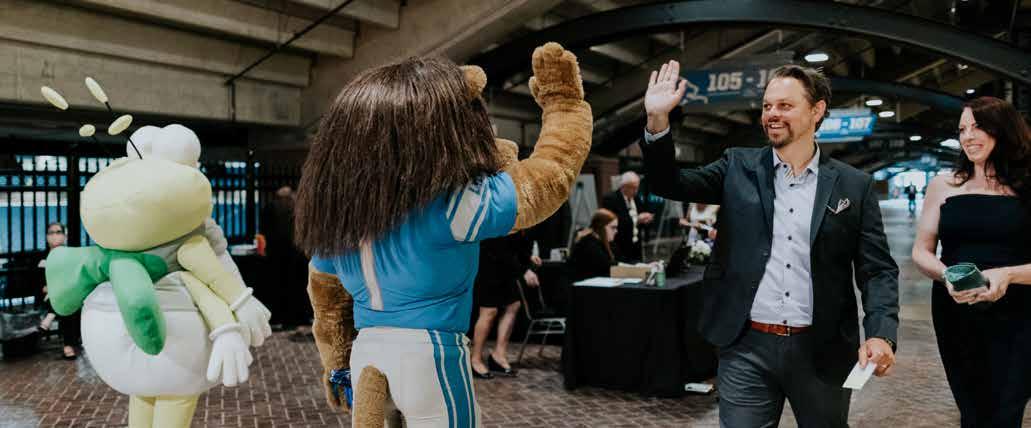
Way to go, engineers!
Kirk T. Steudle, PE, FESD President, The Engineering Society of Detroit Senior Vice President, Econolite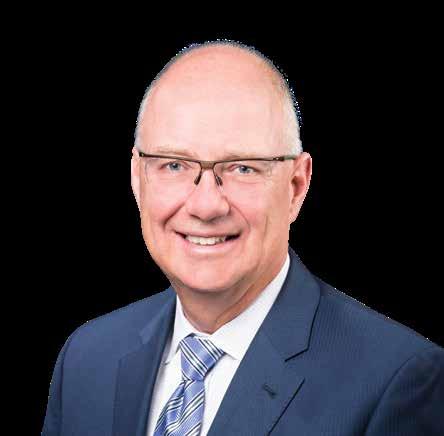 ESD’s Annual Dinner included mascots from both the Lions and DTE Energy.
ESD’s Annual Dinner included mascots from both the Lions and DTE Energy.
The world needs engineering professionals with the skills and experience necessary to improve structures and systems without complicating our troubled environment.

Detroit Mercy offers affordable engineering master’s degree and certificate programs that help you advance your career. You’ll gain relevant in-demand competencies, giving you the opportunity to apply innovative thinking and hands-on experience to your field immediately. Our convenient online graduate certificates can be completed within a year and stack toward master’s degrees. Our programs are structured with professionals in mind, designed to give you the skills you need and structured to fit your demanding schedule.
LEARN MORE ABOUT OUR ENGINEERING PROGRAMS TODAY!

Representative, Environmental Communications, Air & Waste Management Assoc., E. Michigan Chapter
Instructor, Wayne State University School of Engineering
Member of the College of Fellows
Past President, ESD Affiliate Council
Distinguished Service Award Education & Professional Activities Board Affiliate Council Presidents Committee Fund raiser Table Captains Committee Future City Special Award Judge Member since 1987
Retired Member since 1992
RON N. IRWIN
Retired, Chrysler Corp. Member since 1982
Retired, Vice President, Sedgwick of Michigan Member since 1971
Retired, Sales Engineer, Eclipse Innovative Thermal Solutions Member since 1977

Retired, Michigan Bell Member Senior Engineers Council Member since 1988
Retired, U.S. Army Corps of Engineers Member since 1967
Retired, Holley Carburetor Member since 1974
Retired, President & Owner, R. A. Young Industries Member since 2016
Retired, President, Pointe Mfg./Engineering Inc. Automotive Engineer, Chrysler Corp.
Staff, Retired Engineer Technical Assistance Program Member Senior Engineers Council Member since 1990
The Society acknowledges the deaths of the following members, whose contributions and service will not be forgotten:
ACS, Michigan
AKT Peerless Environmental Services
Alberici Constructors, Inc.
Albrecht Engineering, LLC
Altair Engineering

American Axle Manufacturing

American Society of Employers
Aristeo Construction
AUCH Construction
AVL Mobility Technologies
The Bartech Group
Barton Malow Family of Companies

Blue Cross Blue Shield of Michigan
Blue Care Network
Brightwing Center for Automotive Research
Central Michigan University
The Christman Company
Christman Constructors, Inc.
Chrysan Industries
Citizens Insurance Clark Hill, PLC
CleanEarth
CMS Enterprises
Cornerstone Environmental Group, LLC
CPCII
Dale Prentice Company
Dearborn Mid-West Company

DENSO International America, Inc.
Detroit Metro Convention & Visitors Bureau
DTE Energy
DTE Energy Gas Operations
Dürr Systems, Inc.
Eastern Michigan University
Electro-Matic Products, Inc.
Energy Sciences
Experis
Farbman Group
FEV
Financial One, Inc.
Fishman Stewart PLLC
Fusion Welding Solutions Gala & Associates, Inc.
GHD
General Dynamics
General Motors Company

George W. Auch Company
Ghafari Associates, LLC
Global Information Technology Golder Associates Inc.
GZA GeoEnvironmental, Inc.
Harley Ellis Devereaux
Hartland Insurance Group, Inc.
Hubbell, Roth & Clark, Inc.
Huntington National Bank
IBI Group
Ideal Contracting
JNA Partners, Inc.
Innovative Engineered Solutions, Inc.
JNE Consulting
Kettering University Knovalent, Inc.
Kolene Corporation
Kostal North America
Lake Superior State University
Lawrence Technological University Limbach Company, Inc.

Link Engineering Co.
LTI Information Technology
Macomb Community College Maner, Costerisan & Ellis, PC
MEDA Engineering & Technical Services
Michigan State University

Michigan Technological University
Midwest Steel Inc.

Mitsubishi Motors R&D of America, Inc.
Neumann/Smith Architecture
Newman Consulting Group, LLC
Northern Industrial Manufacturing Corp.
NTH Consultants, Ltd.
Oakland University
Original Equipment Suppliers Association
Project Performance International
ROWE Professional Services Company
Rumford Industrial Group
Ruby+Associates, Inc.
Saginaw Valley State University
SSI
Stellantis Talascend, LLC
Testing Engineers & Consultants
Tetra Tech
Thermal-Netics
Troy Chamber of Commerce
Universal Weatherstrip & Bldg. Supply
University of Detroit Mercy

University of Michigan

University of Michigan-Dearborn Wade-Trim
Walbridge
Wayne State University
Western Michigan University
The Whiting Turner Contracting Company
WS
ZF Group

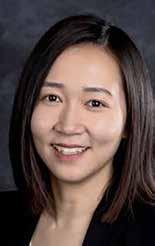
Chengcheng Fang, PhD, assistant pro fessor in Michigan State University ’s Department of Chemical Engineering and Materials Science, was named to the MIT Technology Review ’s 2022 35 Innovators Under 35 Global List. The list recognizes the brightest young minds working in technology today. Fang’s research group focuses on developing multiscale quantitative characterization tools and designing advanced materials and manufacturing methods for energy storage and conversion devices.
AUCH Construction has been awarded 2nd place in the 2022 Construction Safety Excellence Award (CSEA) program sponsored by Wil lis Towers Watson. The honor was granted by the Associated General Contractors of America (AGC) at their annual con vention. AUCH’s written submission of their safety program was selected in the construction manager category among entries from across the nation.
Ruby + Associates Chairman and founding principal David I. Ruby, PE, SE, has received the 2022 J. Lloyd Kimbrough Award from the American Institute of Steel Construction. The award honors engineers and architects who are univer sally recognized as the preeminent steel designers of their era.

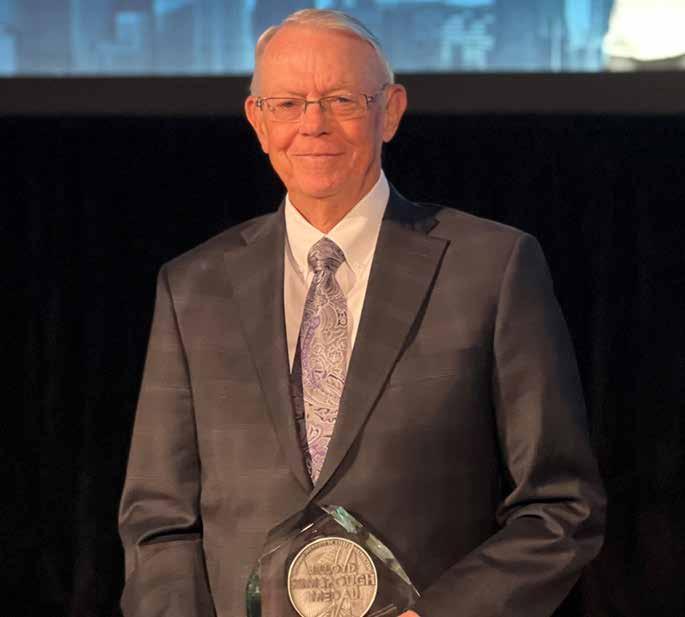
There’s no better place to be than in Detroit. That’s been our belief since our founding over 40 years ago. Having a headquarters in the Motor City has helped us build our relationships with some of the biggest names and most dynamic companies around the world. Beyond that, Detroit attracts thoughtful, intelligent, hardworking people with the kind of spirit that’s only found here.
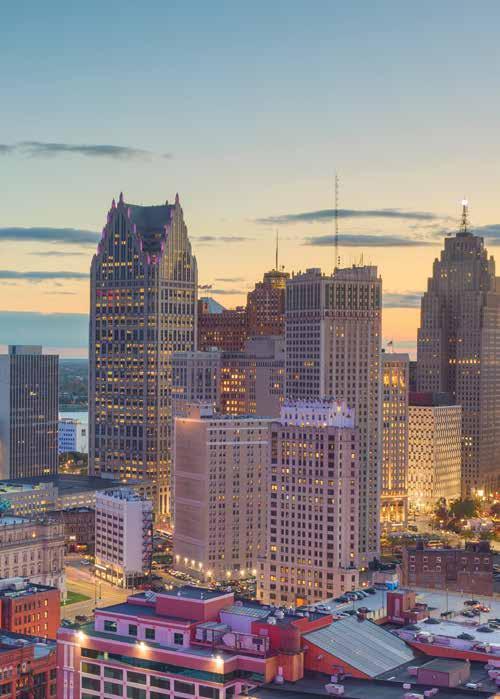
After all this city has granted us, we are honored to be named The Engineering Society of Detroit’s Corporate Partner of the Year.
We thank those bold, determined people who have helped make us what we are today. And we welcome back everyone looking to give back to our great hometown. We couldn’t be more proud to say we’re 100% Detroit.
Chengcheng Fang David RubyA critical shortage of perfusion ists—medical professionals who operate equipment such as heartlung machines—prompted Lawrence Technological University to add the cardiovascular perfusion program. The only such program in Michigan, it is offered through LTU’s Department of Biomedical Engineering, in partnership with Plymouth-based Comprehensive Care Services Inc.
Students in the program “will receive rigorous perfu sion education and training with access to leading edge laboratories, simulation suites, and abundant clinical rotation opportunities across the country,” said Dr. Tarek Sobh, FESD, LTU president and an ESD Fellow.

Courses in the program include anatomy, hematology, patient care and professionalism, psychology, perfusion theory, critical care, pharmacology, research methods, and clinical practice.
According to Payscale.com, the average perfusionist salary in the United States is $124,564 per year. Job growth over the next 10 years is predicted as much faster than the average for all occupations.

Mike Scimeca has rejoined the Gha fari Associates as an executive vice president heading its operations + sys tems engineering team. In this capacity, Scimeca will focus on team development as well as provide principal oversight on projects and manage client relationships and new pursuits.

The National Academy of Engineer ing hailed targeted noise control—a theory developed by Sean Wu, PhD , distinguished professor of mechanical engineering at Wayne State Univer sity —as a breakthrough technology in its final report of a virtual workshop held in Washington, D.C. Wu was cred ited for developing a theory to address noise issues facing manufacturers. The report specifically highlighted an approach using Sound Viewer technology to diagnose, analyze and address com plex structural and airborne noises.

Through togetherness we build greatness.Mike Scimeca Sean Wu Tarek Sobh
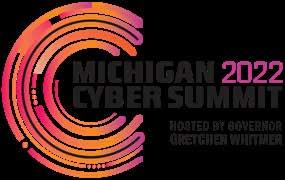
October 27, 2022 • In-Person Event
The 2022 Michigan Cyber Summit will bring together experts to address a variety of cybersecurity issues impacting the world. Attendees will hear from government and industry leaders on managing today’s cybersecurity challenges.
The event will be at Suburban Col lection Showplace in Novi. For more, visit events.esd.org/cyber-summit or contact Leslie Smith, CMP, at lsmith@ esd.org or 248-353-0735, ext. 152.
October 28, 2022 • In-Person Event
Join ESD for a members-only, behindthe-scenes technical tour of LIFT, which helps organizations move emerging materials and processing technologies from advanced concepts to commercialization so they can be adopted by industry faster.
ESD members are invited to tour LIFT’s advanced manufacturing High-Bay and collaboration facility. A 100,000 square foot building in Detroit’s historic Corktown neighbor hood showcases the future of manu facturing. From a high-bay floor with cutting edge smarter manufacturing technologies to the LIFT Learning Lab, which is educating the next gen eration of advanced manufacturers, LIFT is continuing Detroit’s innova tion legacy in the heart of American Manufacturing.
The tour starts at 1 p.m. and costs $25 for ESD members. Non-members can join ESD for $99 and attend for free. To register, visit esd.org or con tact Elana Shelef at 248-353-0735, ext. 119 or eshelef@esd.org.
November 10, 2022 • In-Person Event
ESD’s Engineers Get Hired job fair will be held at the Suburban Collec tion Showplace in Novi.
Job Seekers: Enjoy the opportu nity to meet face-to-face with repre sentatives from Michigan’s leading companies. Employers will be recruit ing for full and part-time positions, internships, and co-op opportunities.
Employers: ESD’s job fair draws hundreds of tech professionals eager to find their next opportunity. Meet in-person with qualified candidates seeking full and part-time positions, as well as internships and co-ops.
Visit esd.org. To exhibit, contact Leslie Smith, CMP, at lsmith@esd.org or 248-353-0735, ext. 152.
ESD’s Affiliate Council is coordinating a toy drive for children and families in need. We’re accepting unwrapped toys, hats, gloves, socks and diapers. All ages, infant to 18. Just bring item(s) to the ESD parking lot and drop off from noon to 3 p.m. It’s that easy!
For more information, contact Elana Shelef at eshelef@esd.org or 248-53-0735, ext. 119.
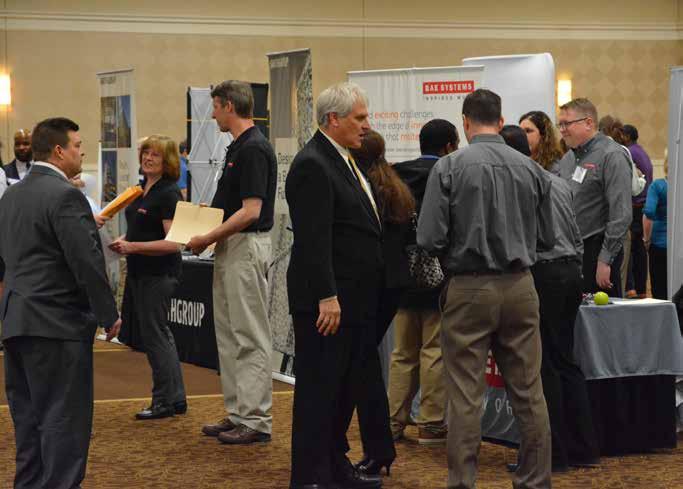
March 14, 2023 • In-Person Event
In its 32nd year, the Solid Waste Technical Conference, hosted by the Michigan Waste and Recycling Association and ESD, focuses on cut ting-edge technological innovations and solutions related to the solid waste industry. The conference will feature experts to help attendees learn about issues related to policy, new technolo gies, regulatory updates and what the future holds for the industry.
Sponsorship and exhibit oppor tunities are available. Visit esd.org or contact Leslie Smith, CMP, at 248-353-0735, ext. 152 or lsmith@esd.org for more information.
Join ESD’s Affiliate Societies as we come together to honor and rec ognize our leaders who have distinguished themselves through outstanding achievement and ser vice. The event will feature the 2023 Gold Award winner.
For more info, visit esd.org or con tact Elana Shelef at eshelef@esd.org or 248-353-0735, ext. 119.
Engineers Get HiredCompetition Day: January 23, 2023
In-Person Event
Inspire middle school students through the Michigan Regional Future City Competition, a project-based learning program where students work as a team with an educator and volunteer mentor to design a city of the future. This year’s theme is climate change.

Mentors: Spend an hour or two a week between now and January coaching and advising a team. Share real-life experiences, offer technical guidance, and help translate academic concepts. Contact Allison Marrs at amarrs@esd.org or 248-353-0735, ext. 121.
Judges: Draw on your expertise to evaluate our teams’ efforts. Contact Leslie Smith at lsmith@esd.org or 248-353-0735, ext. 152.
Sponsors: There are many opportunities to sponsor a component of competition day, including industry-specific awards. Contact Elana Shelef at eshelef@esd.org or 248-353-0735, ext. 119.
Holding a PE license sets you apart. Adding PE initials after your name provides many benefits including a higher salary, faster career advancement and the ability to sign and seal contracts and drawings.

For over 75 years, ESD has helped thousands of engineers pass the State licensing exam. ESD’s review courses will prepare you to pass the exam on your first try. Learn in a small-group setting from academic and industry professionals who have first-hand knowledge of the course material.
For more information, please visit esd.org or contact Elana Shelef at eshelef@esd.org or 248-353-0735, ext. 119.
Ongoing (check esd.org for dates)
Online sessions are scheduled several times each month and held via the Zoom platform.
Learn more about PE licensure at a complimentary information session. There is no cost to attend, but preregistration is required.
Check esd.org for dates and times. For more information contact Elana Shelef at eshelef@esd.org or 248-353-0735, ext. 119.
In its 24th year, this conference, hosted by DTE Energy and ESD, the only one of its kind in Michigan, is designed to educate small to large commercial and industrial businesses on technology, products, and services that will assist them in successful energy management.
The conference will take place at the Suburban Collection Showplace in Novi. For more informa tion, please visit esd.org. For exhibit and sponsorship opportunities, contact Leslie Smith, CMP, at lsmith@ esd.org or 248-353-0735, ext. 152.
Submission Deadline: November 18, 2022 Attention students: we want to hear from you! In an effort to promote and engage student voices and ideas about the profession of engineering, ESD and its TechCentury magazine will hold its 5th Annual Engineering Student Writing Contest. The contest is open to all students attending Michigan universities and studying within any of the engineering disciplines or related fields.
% The student will write a 750-word essay on one of four topics listed below.
% The student must be studying an engineering or related discipline at an accredited Michigan university.
% Entries must be received by close of business, Friday, November 18, 2022 at sthwing@esd.org. Entries must be submitted as Word doc files and be accompanied by an application.
% The TechCentury Editorial Board will review entries, and the top three essays (along with a student profile) will be published in the spring issue of TechCentury.
% The top essayist will be recognized at the 2023 ESD Gold Award Reception as well as receive a $1,000 scholarship sponsored by Fishman Stewart, LLC.

% Climate change: What do you envision engineering can do to assist with ‘engineering for net zero’ and how can you contribute to the solution?
% Write an advice column: What advice would you give either your mentors or upcoming students/ young engineers in relation to the world of engineering?
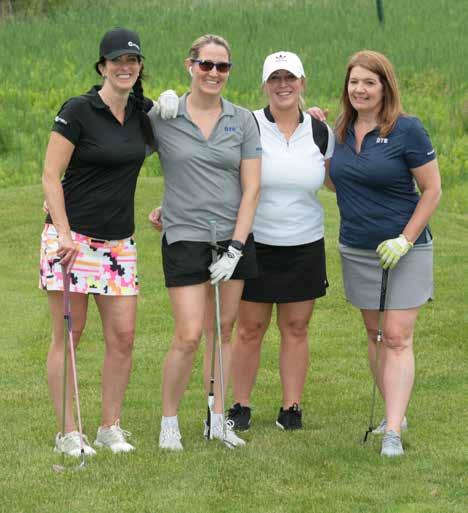
June 12, 2023 • In-Person Event
A day of fun and networking in support of engi neering! Mark your calendar and plan to join your colleagues and friends for ESD’s Annual Golf Out ing. Outing proceeds help support outreach and educational efforts such as the Girls in Engineering Academy, the Michigan Regional Future City Compe tition, ESD Student Chapters at Michigan universities and scholarship programs for high school and college students. The outing will take place at Oak Pointe Country Club in Brighton.
For more information, contact Heather Lilley at hlilley@esd.org or 248-353-0735, ext. 120.
% What’s your favorite SciFi or Fantasy story, why, and how is engineering involved in the storyline?
% STEAM Education: How would you encourage a young person to pursue a career in engineering?
Visit esd.org to obtain the application form, then send the entry form and essay to sthwing@esd.org by Friday, November 18, 2022.
Deadline: December 9, 2022
At a special reception each March, the ESD Affiliate Council (made up of 94 societies) presents its most prestigious tribute, The Gold Award, to honor an outstanding engineer or scientist. Each society may nominate one individ ual; all nominations received are then judged by a group comprised of past Affiliate Council presidents. The 2023 Gold Award Recognition & Reception will be held on March 15, 2023.
Nomination forms can be found at esd.org. For more, please contact Elana Shelef at eshelef@esd.org or 248-3530735, ext. 119.
Nomination Deadline: February 28, 2023
Help us recognize leaders by nomi nating a Fellow, one of the highest recognitions that ESD can bestow its members. Candidates are selected based on outstanding professional accomplishments, leadership and service. They must be members in good standing for at least five years at time of application deadline. Full details and instructions are at esd.org. For questions, contact Heather Lilley at hlilley@esd.org or 248-353-0735, ext. 120.
Entry Deadline: February 28, 2023
ESD’s John G. Petty Image Award recognizes individuals who have pro moted, publicized and enhanced the engineering and technical professions to the public-at-large through pub lic engagement, mentoring, public speaking, authoring articles, and other publicly visible activities.
Nominees do not have to be ESD members, but nominators must be. Nominations are due by February 27, 2023. Nomination requirements and additional information can be found at esd.org or contact Susan Thwing at sthwing@esd.org.
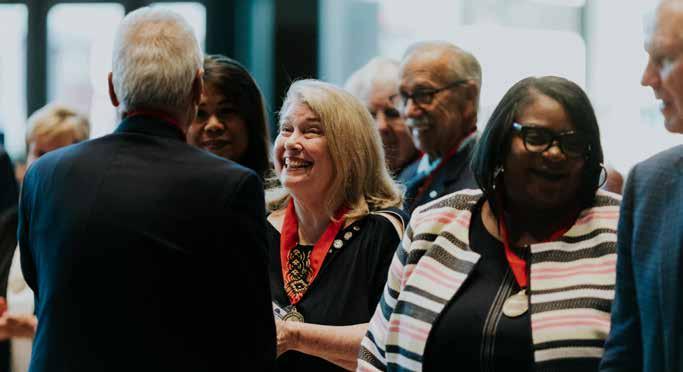
Entry Deadline: February 28, 2023
ESD’s Construction and Design Awards honor the three pri mary members of the building team—owners, designers, and con structors—and recognize outstanding team achievement and innovative use of technology. At least one of the primary members of the project team must be an ESD member. For more information, visit esd.org or contact Leslie Smith, CMP, at lsmith@esd.org or 248-353-0735, ext. 152.
Applications Due: February 20, 2023
This award recognizes a young professional under the age of 35 who has best distinguished him/herself in the engineering and scientific communities. Cri teria include education, work experience, and professional and community activities. Applicants must be members of ESD.
This award recognizes an undergraduate student who has best distinguished him/ herself in the engineering and scientific communities. Criteria include academic background, extracurricular activities, and employment experience. The winner(s) will receive a $2,000 scholarship.
This award recognizes a graduating high school senior. To be considered, applicants must have a least a 3.0 GPA, plan on pursuing a career in the field of engineering or the life sciences, and participate in volunteer activities. The winner(s) will receive a $2,000 scholarship.
Fellow nominations are due February 28, 2023.
Applications will be available in December at esd.org. For more information, contact Sue Ruffner at sruffner@esd.org or 248-353-0735, ext. 117.
The FEV Group is a lead ing global engineering service provider in the field of mobility, software, and energy management. The company’s engi neering capabilities span the entire transportation ecosystem including all on-road applications as well as rail, marine, aerospace, but also agriculture, construction, mining, and industrial.
Recognizing the evolution towards a software-defined vehicle, where emphasis will be placed on softwaredriven features, including ADAS/AD and infotainment, FEV combined its expertise in intelligent mobility and software development under the FEV.io brand in 2022. Under this brand, the company looks to accelerate and optimize innovative solutions and interdisciplinary collaboration in the areas of automated and autonomous driving, as well as connectivity of infra structure, people, and vehicles.
“We have been supporting our cus tomers in the development of intel ligent mobility solutions for many years, and we see the FEV.io brand as a way to further increase the value we provide in this space,” said Stefan Pischinger, President and CEO of FEV Group. “This ranges from design and industrialization to the provision of frameworks and tools.”
FEV was founded in 1978 as a spin-off of the Aachen Technical Uni versity by Prof. Franz Pischinger. In the early days, services focused pri marily on the development of diesel engines. Soon thereafter, the core competencies covered all types of combustion engine applications, fol lowed by transmissions and driveline, and ultimately becoming a turn-key provider for full vehicle development.
Under the FEV.io brand, FEV delivers state-of-the-art solutions, including systems engineering, functional safety, cybersecurity, connectivity, ADAS/AD, infotainment, and software and E/E platforms and integration.


The company expanded its busi ness to the United States in 1985. Starting in California, FEV eventually moved its operations to the Detroit area, where its North American Technical Center has been located since 1997. By the end of 2009, after growing success in Europe and the U.S., FEV established locations in Beijing and Dalian, China, and Pune in India. Today, they employ more than 7,000 people in 40+ locations on five continents.
Services offered by FEV on a global basis cover all of the following disci plines:
% Vehicle Development: Provid ing extensive, in-house expertise to OEMs and suppliers in their efforts to develop full-vehicles, systems, and components, sup porting architectures to chassis, E/E, exterior and interior develop ment, and lighting from concept to production.
% Propulsion Development and Electrification: Whether a gaso line, diesel or alternative-fueled internal combustion engine (ICE), a hybrid or electric propulsion system, fuel cell, batteries, power electronics, e-motors or complete EDUs, FEV provides its engi neering expertise throughout all industries.
% Intelligent Mobility and Software: Under the FEV.io brand, FEV delivers state-of-the-art solutions, including systems engineering, functional safety, cybersecurity, connectivity, ADAS/ AD, infotainment, and software and E/E platforms and integration.

% Software and Testing Solutions: The service portfolio includes cut ting-edge, tailor-made test benches, measurement and conditioning technologies as well as software solutions, which allow for an improved and efficient testing or calibration process from road to rig.
% Strategic Consulting: Combin ing top management consulting
expertise with technical capabili ties and experience enables FEV to create pragmatic solutions for the most current challenges such as business strategies, advanced technologies, smart mobility, cost engineering, and operations.
The entire mobility industry is undergo ing an unprecedented transformation. Much of this is in response to regional and global environmental and/or sus tainability initiatives and regulations. FEV is ready for the challenge.
In 2021, when the Biden admin istration announced a new national target for electric vehicles to com prise 50% of sales by 2030, U.S. Sec retary of Energy, Jennifer Granholm and Michigan Congresswoman Haley Stevens visited the North American Technical Center for a first-hand look at some of the technologies enabling this transition. During the visit, attendees got an inside look at some of FEV’s state-of-the-art test facilities for electrified vehicles and components. Demonstrations dis played the full range of FEV’s capa bilities for on-road vehicles, from a single-seat three-wheeled electric city vehicle to a hybrid renewable natural gas (RNG) Class 8 truck.
“It was an honor to host Secretary Granholm, and to showcase the excit ing work our team is doing to make sustainable transportation a reality,” said Patrick Hupperich, president and CEO of FEV North America.

‘Entering the next level’ of your career is not always only work for the FEV team. While their teams find

excitement working on a continu ous multitude of different projects, they do manage to have fun together as well. FEV hosts several internal team-building and student events throughout the year, with the objec tive of building camaraderie, knowing that people are the most important asset to their organization.
For more on how FEV is shaping the future of mobility, visit fev.com.
One of ESD’s newest Sustaining Members, FEV participated in ESD’s Top Golf outing and networking event for members of the ESD Student Chapter at MSU in April. In 2021, U.S. Secretary of Energy, Jennifer Granholm and Michigan Congresswoman Haley Stevens visited the North American Technical Center for an inside look at some of FEV’s state-of-the-art test facilities for electrified vehicles, such as this single-seat threewheeled electric city vehicle.The Engineering Society of Detroit is busy preparing the next generation of engineers for the challenges of tomorrow. But it’s also worth noting how ESD, through the years, helped earlier generations of engineers meet the challenges of the technical professions.
One good example is named Stan Beattie. Now 85, he credits ESD with making his career possible, and like so many who have benefited from ESD’s career assistance, he paid it back to those who came after him by working for the Society’s programs.

Beattie attended University of Detroit High School, where, he recalls “a wonderful physics instructor” who inspired his love for the subject: “In four years of high school I had one science class, and that was physics, and I hit the ball over the wall. The subject was so interesting and the teacher was so excellent.” He continued his edu cation at Holy Cross College in Massachusetts on a Navy ROTC scholarship, majoring in physics. Upon graduation, he was commissioned as an ensign in the navy in 1959. “I was obligated to serve three years, which was a bargain for a college education,” he said.
A job interview arranged by his father at Michigan Con solidated Gas Co. wound up turning into a 34-year career, from his hiring in 1962 to his retirement in 1996. With the help of ESD, he rose from junior engineer to manager of several engineering groups at the utility, including man ager of gas dispatch.
“I joined ESD in 1963, very early,” Beattie said. “We had a vice president of engineering who had a high opinion of the engineering society and a high opinion of grooming young engineers, so they just automatically signed you up with ESD, and they paid the bill.”
ESD’s engineering exam preparation classes, Beattie said, were a key to his advancement. “I could not have passed Part 1 (today known as Fundamentals of Engineer ing) without the help of the ESD classes,” Beattie said. “I was happy to get up early Saturday morning and drive to take a class. They were just so good—much better than the classes I took at Holy Cross College.”
Four years after completing Part 1 of the engineer test, Beattie took more ESD classes and passed Part 2, today known as the Professional Engineer (PE) designation. Thanks to the ESD test prep, he passed it the first time, while, Beattie joked, “my boss had to take it five times.”
Beattie would pass his knowledge on to younger engi neers as chair of what was then the educa tion council of ESD, where he would teach PE test prep classes. Although, he recalled, his initial delivery was panned by some students as wooden: “I gave my presentation and the students were asked what they thought of their instructor, and one fellow wrote down, ‘Get a human being.’ I had a room full of fellows whose livelihoods depended on them pass ing the test, so I was really nervous at first. But after two or three years I got more relaxed.”
Beattie would continue teaching ESD exam test prep classes until the state of Michigan adopted the national test for the Professional Engineer designation in the 1970s.
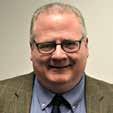
Beattie fondly remembered those days of the ESD in the Rackham Building, where the Society was also a social club with dances, continuing education programs in topics such as astronomy, and exclusive members-only tours and speaking events of scientific interest.
“I am eternally grateful (to ESD), because I never would have become a registered professional engineer without their classes,” Beattie said. “There is just no way. And I was glad to chair their education council. And I loved teaching that class. I liked the money, but even more, I liked having people telling me that it was my doing that they were able to pass the exam. Those are aspects I look back on with great fondness.”
Matt Roush is Managing Editor of the University News Bureau and Director of Media Relations at Lawrence Technological University, and co-host of the M2 TechCast podcast with Mike Brennan. Before joining LTU, Roush spent more than 30 years as a reporter and editor cover ing high tech, business, and local government. Stan BeattieIn January 1973, Dr. Richard E. Marburger encouraged this Law rence Tech engineering student to attend the student membership night at the Engineering Society of Detroit (ESD) headquarters at 100 Farnsworth in Detroit. My parents were quite amazed and very proud—I was join ing the Engineering Society of Detroit albeit as a student member. In their minds, my membership in ESD marked me as a true engineer. They both knew about and respected ESD.
In the 1940’s, my mother’s boss, an executive at McCord, had been a very proud ESD member. Likewise, my father’s best friend, Carol McBeth, an executive engineer at Holley Carbu retor and later Chandler Evans, wore his ESD lapel pin with great pride. Mr. Cogsdill, our next-door neighbor in Detroit, was an active member. In the 1970’s, it was not uncommon for many engineers to work in major Detroit industrial companies without a Bachelor of Science in engineering degree; technical work experience was the critical credential. ESD mem bership carried special importance though—it was considered the badge of peer approval and acceptance by the Detroit engineering fraternity.
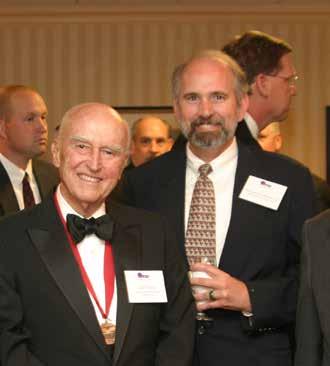
In 1974, upon graduation from Lawrence Institute of Technology [now LTU], my first professional posi tion was with the Arabian Ameri can Oil Co in Saudi Arabia. My ESD membership, which “traveled” with me around 13,000 miles from Detroit, proved important in keeping me abreast of what was happening back in the USA in the engineering world. In addition, ESD’s annual member
ship issue helped me connect and net work with fellow ESD members who were also working overseas in Saudi Arabia and outside Michigan in Mas sachusetts and Texas.
In January 1986, now back from Saudi Arabia in the Metro-Detroit area, ESD headquarters was the site of my interview (ironically) with Dr. Marburger (who was now President of Lawrence Tech) for a position as “Mr. Outside” with LIT’s computer center. Within the month Dr. M had me active as the Lawrence Tech rep on ESD’s membership committee. At my first committee meeting, I met a fel low Lawrence Tech grad—John Petty. We became great friends and served on several ESD committees together including membership, community engagement, publications and then the TechCentury Editorial Board. Many other personal friendships have been formed through mutual ESD involve ment over the years.
In the 1980’s into the 1990’s, the Bachelor of Science degree in engi neering became an important imper ative for employment in engineer positions. My ESD membership help me distinguish myself as being active in my engineering profession and provided a great conduit to commu nity outreach opportunities. These both proved to be critical items on my professional resume as a project management consultant, professional trainer, adjunct faculty member, and then when I ventured into a fulltime position in academia at Eastern Michigan University.
My activity on the ESD’s Construc tion & Design Committee (previously the C&D Forum) proved invaluable to me as the coordinator of EMU’s
Construction Management [CM] programs. Many of my ESD C&D colleagues were interviewed for my doctoral dissertation research on ethics in construction. Also, I lever aged their counsel and advice on the direction for the CM MS degree pro gram, ideas for potential professional training classes, as presenters to my students, and a great source of jobs for my CM graduates.
Some of my most rewarding ESD activity has been with the annual Future City Competition. Being able to witness our future engineers con tend with the technical challenges of designing a city of tomorrow is very inspiring. Each year I feel amazed by the talented young minds and very grateful for the work of their teachers and adult advisors.
Overall, my membership with ESD has been an adventure full of very rewarding experiences, friends, and fun.
William A. Moylan, PhD, PMP, FESD, DTM is a professor emeritus at Eastern Michigan University and instructs in Construction Management.
Dr. Moylan is a Certified Project Management Professional (PMP) through the Project Management Institute. He also serves as a consultant, trainer, educator, expert witness and practitioner in professional Project Management and Construction Engineering. He is a member of the TechCentury Editorial Board.
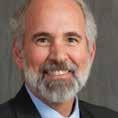 At the ESD Annual Dinner in 2004 with ESD Fellow Syd Terry, who then served on LTU’s Board.
At the ESD Annual Dinner in 2004 with ESD Fellow Syd Terry, who then served on LTU’s Board.
ecently I was a given the opportunity to interview Dr. Richard Marburger, a scientist who has made an impact in the engineering industry for over fifty years. As a 20-year-old student, studying civil engineering at Michi gan State University, I was thrilled to learn from someone who has so much knowledge about engineering. As we sat down for the interview, I realized quickly we had both come quite prepared with many topics to discuss.
While most older gentlemen would long for a blissful retirement where the work would finally come to a halt, Dr. Marburger stayed active as he invested his knowledge back into the industry he cares so much about. While we did have different ideas of how this article would go, one thing became very clear: Dr. Marburger’s passions have grown throughout his career and he strives to make an impact for future generations.
Dr. Marburger grew up hoping to follow in his father’s footsteps of becoming a physician. His education began at Kenyon College in Gambier, Ohio, where he received a full scholarship. During a biology lab, trouble with using formaldehyde while dissecting frogs caused Dr. Marburger to physically not be able to complete the course. After dis cussing options with a director, he decided to change his focus from premed to physics. The director advised him to switch to Wayne State University in order to have the expe rience of a large research university.
Dr. Marburger graduated from of Wayne State University with three degrees in physics. It is noted that he was even a distinguished graduate because he was identified as such by the president. From there he went to General Motors Research Laboratories in 1952 and became a Junior Research Physicist and College Graduate in Training. Briefly he spent time in the Air Force as a second lieutenant during the Korean War. In the 1960s, he went to Lawrence Technological University. Over the years became president at the university, and eventually left the office in 1993.
Dr. Marburger became the president of ESD in 1980, where he led a successful increase in membership. Now, he volunteers at ESD and Lawrence Technological University. He is also on the Executive Committee at the ESD College of Fellows and serves as President of the Board of the Manoogian Charter School.
Dr. Richard Marburger, President Emeritus of Lawrence Techno logical University, is an Past President of ESD and a Fellow.
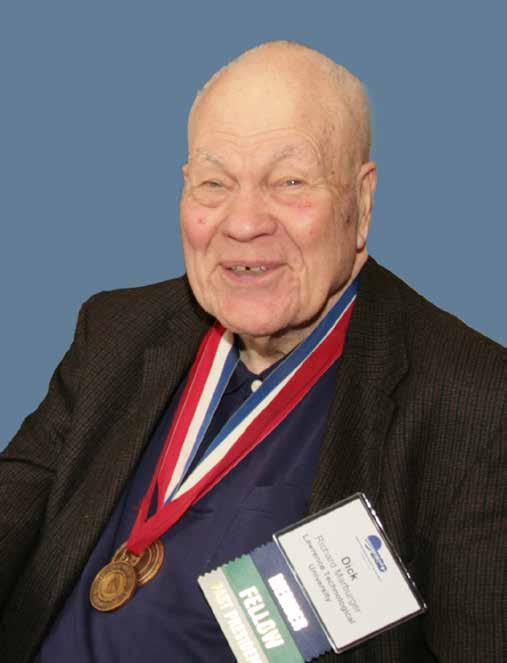
“My great aim is that this article will allow people to understand the wide range of professions other than those specifically denoted for engineering that are specifically eligible for the Engineering Society of Detroit. Notably the scientists, all of them, and many more. It connects engi neers to the members of the ‘Allied Professions’, who are not only wanted, but needed in the ESD. This kind of collaboration has always been crucial for the success of advancements as a society,” he said. “At the General Motors research labs, on every engineer’s desk, you could find a copy of ‘The Handbook of Chemistry and Physics’ which illustrates what the engineers do.”
Dr. Marburger stressed on how one field could not exist without the other. Even in our conversations about
the Michigan State University student chapter of ESD, Dr. Marburger gave me the same advice.
“At student chapters, like at Michigan State, do not limit it to just the engineering department. Particularly go after the science department. They are equally eligible to be members of The Engineering Society of Detroit. And the relationship between scientists and engineers is a close one,” he said.
After listening to Dr. Marburger’s comments, I have realized how applicable this has been in my own studies as a college student. In many classes, especially general education classes like chemistry, physics, and calculus, students of all majors come together to collaborate on our projects. Even in our small Engineering Society of Detroit chapter at Michigan State, so much could be gained with a more diverse group of students who could collaborate on different ideas.
“One of my most defining moments of great use was recruiting students at Detroit Country Day School for Law rence Tech. I was informed of a young man name Steve Ballmer, who was a young student who had done every thing by his junior year at Detroit Country Day.”
Steve needed more advanced classes, especially in math, and Dr. Marburger invited Steve to come study at Lawrence Tech. He took math, calculus, complex variables, cross transforms, and other classes. Steve’s successful career led him to become the Chief Executive of Microsoft. He has become a generous supporter, by donating 20 million dollars to create what he called the Marburger STEM center at Lawrence Technological University.
He also discussed about the importance of bringing kids access to Science, Technology, Engineering, and Math (STEM) classes earlier in their education. Dr. Marburger said that his other defining career moment was being the president of the Board of Education at the Manoogian Charter School, which is a kindergarten through twelfth grade STEM school.
“We need to get people interested in science and engineering earlier in their education. This STEM/ STEAM (Science/Technology/Engineering/ARTS/Math) school can be replicated in other parts of the country as well. These ideas have been gathered by the College of Fellows. The K-12 impact can help integrate kids into these studies and familiarize them throughout their years of education,” Dr. Marburger said.
As a young engineer, I think programs like this would be very beneficial to help train minds at an earlier age. I have peers who had similar STEM programs throughout high school, and this early access to technical education helped expose them to interests that prepared them for college. This also helped to identify if engineering was the correct career path for them.
When I asked Dr. Marburger about his thoughts on how the engineering industry has changed, his emphasis was focused on career readiness and its important.
“After getting a master’s at Wayne State, I got a job at the GM Laboratories. I thought, ‘Boy, I got a master’s degree from a big-deal university. I’m the complete finished product!’ But, oh, I was just a college graduate in training. How’s that for a come down!” The big life lesson he learned was that even though he had completed another degree, he was far from knowing all that the industry had to offer.
“There is a continual preparation to perfect yourself as being totally competent in your profession that goes on really over the entire lifetime in my experience!” Dr. Marburger exclaimed.
Throughout the interview, Dr. Marburger made special note of many people who had been of great influence on ESD. These people have dedicated time and effort into leading the Engineering Society of Detroit to new heights.

These leaders are: Robert Magee, Executive Director of ESD; Roy Link, Chairman, ESD College of Fellows: Heather Lilley, ESD Director of Membership; Dr. Tarek Sobh, LTU President; Dr. Nabil Grace, LTU Dean of Engineering; Dr. Hosep Torossian, Principal of the Manoogian High School (Manoogian STEAM Center); Dr. Sibrina Collins, Executive Director, LTU Marburger STEM Center; and Steve Grigorian, President, Detroit Economic Club.
“The best advice I have is keep open your education and adding your educational credentials throughout your whole lifetime. And one of many ways to do that is after graduat ing from a university join the Engineering Society of Detroit because it can greatly assist you in doing just that.”
After over an hour of interviewing, I was given the quick glance into what life was like as a young engineer more than 75 years ago. I will graduate soon and see the industry in a new light just like Dr. Marburger did so long ago. His advice has encouraged me, and many other individuals to stay engaged with the ever-changing industry. If we can motivate ourselves and continue to learn, we can have long careers of growth and knowledge just like Dr. Marburger.
Dana LeFevre is from Livonia, Michigan and is attending Michigan State University’s College of Engineering. She also serves as a student member on the TechCentury Editorial Board.From “Intelligent Modeling and Control of Steam Plant Operations to Reduce Energy Consumption through Artificial Intelligence” to “AI Enabled HVAC Control” to “Membrane-based Energy Recovery Ventilation Savings”—the solutions presented to the DTE E-Challenge are a mouthful but also a bright look at tomorrow’s engineering expertise. Those are just some of the solutions teams participating in the annual competition have created via this year’s entrees.
Teams from seven universities will be moving on to the implementation phase of the DTE E-Challenge 5: Energy Conservation Measure for Michigan Universities in partner ship with The Engineering Society of Detroit. This year’s challenge sought new technologies to reduce energy waste at commercial and industrial facilities.
Students and faculty teamed up to submit a proposal describing their technology to reduce energy waste. The teams with the most innovative and deployable ideas were chosen as finalists to demonstrate their technology at a DTE customer location. Applications were evaluated by an impartial panel of industry judges chosen by DTE and The Engineering Society of Detroit.
Projects from Lake Superior State University , Law rence Technological University , Michigan Techno logical University , Oakland University , University

of Detroit Mercy , University of Michigan Dearborn and Wayne State University were selected to proceed to the implementation phase of the challenge. Over $750,000 was awarded to these univer sity teams to help fund the demonstration of their technol ogy at their proposed demonstration sites.


Student members of the finalist teams were awarded a total of $109,000 in scholarships for their initial work on the project. Students will be eligible for additional scholar ships as they continue working on the implementation of their new technologies through April 2023.
William Endres, Richard and Eliza beth Henes Professor (Mechanical Engineering) and Senior Capstone Design Program Director from Michi gan Technological University—whose team designed a program for Manufac turing Cell Smart Switching as part of its project—said participating in these competitions help students experience “real world” engineering. This is the first year Michigan Tech participated in the challenge.
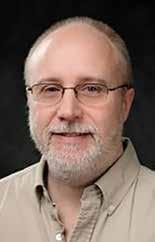 William Endres
William Endres
“The Michigan Tech team is made up of a mixture of engineering disciplines—electrical, mechanical, etc., just as you would in a job or project situation,” Endres said. “They work together to develop a solution to a problem. And they also learn to adapt. In engineering you think you understand a problem, but as you work on the solu tion you realize there are other factors. This challenge helped the students learn to be flexible, adapt, and regroup. The situations these teams face are very real istic because they are working with actual companies to solve actual challenges.”
Since 2012, DTE has partnered with The Engineering Society of Detroit to recognize and support scientific excel lence and technological innovations at Michigan universities through the DTE E-Challenge. E-Challenge seeks to tap the best and brightest engineering minds at Michigan universi ties to come up with new technologies to reduce energy waste at commercial and industrial facilities in DTE’s ser vice territory. This year marks the fifth challenge.
“It’s great that we have been able to open up participation to more universities this year,” says Scott Vangilder, CEM, Principal Energy Manager at DTE Energy/Energy Partnership & Services. “This year was our highest participation rate with 15 invitations, 11 submissions and now our seven finalists. This challenge is an important partner ship with business that gets the stu dent teams fully engaged in creating new energy efficient solutions and technology.”
The current E-Challenge 5 was launched in August 2021, and finalists were recognized at the 2022 DTE/ ESD Michigan Energy Efficiency Conference on May 3, 2022, at the Suburban Collection Showplace in Novi.
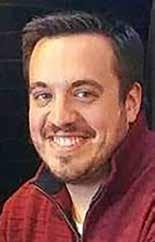
For more information on the DTE E-Challenge pro gram, visit e-challenge.net.
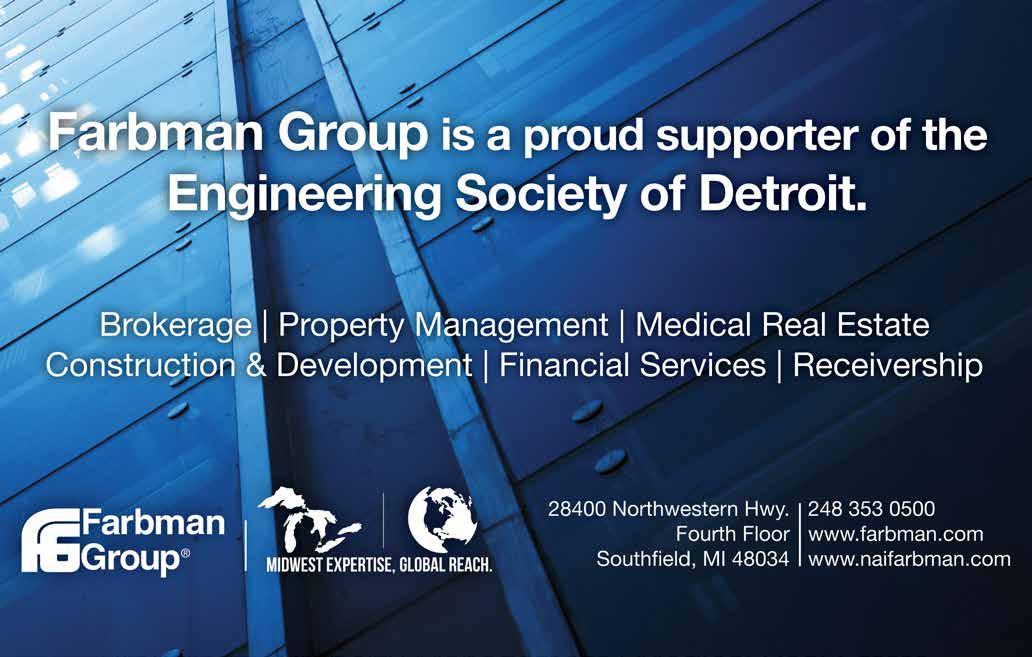 Scott Vangilder
Scott Vangilder
“This challenge…gets the student teams fully engaged in creating new energy efficient solutions and technology.”
Thank you to all those who supported or participated in our 11th annual ESD Golf Outing in memory of David Skiven on June 6 at Oak Pointe Country Club.
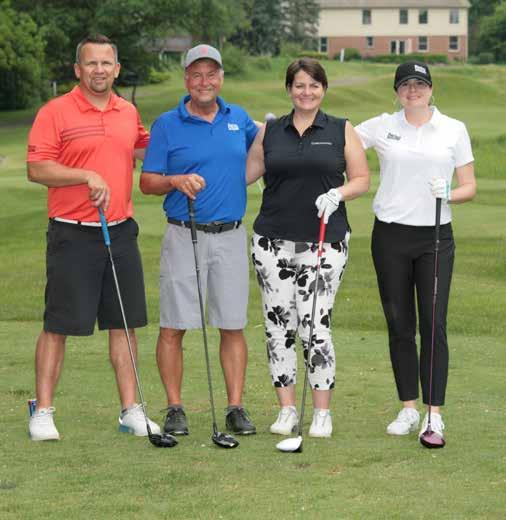
Proceeds from this event support merit-based scholar ships for high school and college students pursuing engi neering. They also support ESD’s student outreach efforts, including the Future City program for middle school students, and our intensive Girls in Engineering Academy for middle and high school students, mostly from underrepresented minority groups. Additionally, funds help ESD Student Chapters at 14 Michigan colleges and universities with engineering programs.
The team from Design Systems again took first place on the Honors Course, with the Walbridge team again coming in second. On the Championship (Champs) Course, the Savills team came in first, while the Sorensen Gross Construction Services team placed second.

The Closest-to-the-Pin winners were Tricia Ruby and Steve Barlow on Honors and Diane Hanna and Chris Hahn on Champs. Longest Drive prizes went to Malory Benedetti and Ted Lilley on Honors and to Ali Elhage on Champs. The winner of the 50/50 raffle was Darren Roney of Tan dem Engineering Group who very generously donated his winnings back.
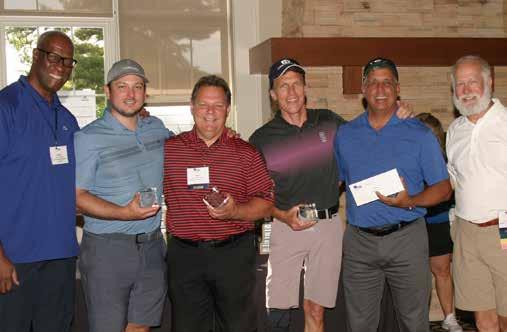
For more coverage of the event, including all photos, please visit esd.org.
 Josh Dewy (center) ESD, with ESD Executive Director Robert Magee (left) and golf chair Mike Ryan (right) from Ghafari.
The Design Systems team receives their trophies for first place on the Honors course.
A foursome from sponsors Barton Malow and Ruby + Associates enjoys the beautiful day of golf.
The foursome above included ESD Student Chapter members from MSU, Ted Lilley (far left), who had the longest drive on Honors, and Steve Curl from RWDI (third from left).
Josh Dewy (center) ESD, with ESD Executive Director Robert Magee (left) and golf chair Mike Ryan (right) from Ghafari.
The Design Systems team receives their trophies for first place on the Honors course.
A foursome from sponsors Barton Malow and Ruby + Associates enjoys the beautiful day of golf.
The foursome above included ESD Student Chapter members from MSU, Ted Lilley (far left), who had the longest drive on Honors, and Steve Curl from RWDI (third from left).

DIAMOND SPONSORS:
Dedicated
PLATINUM SPONSORS:

GOLD SPONSORS:
ACS, Michigan
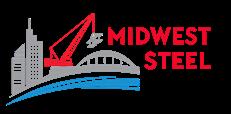
Affiliated Engineers, Inc.

Aristeo Construction Black & Veatch Corporation Commercial Contracting Corporation Farbman Group

Gala & Associates, Inc. Granger Construction

Hubbell, Roth & Clark, Inc. IMEG Corp.


Next Generation Services Group
North American Dismantling Corp Ruby + Associates, Inc.
Sorensen Gross Construction Services Tandem Engineering Group


 Golfers from DTE Energy, one of the Diamond Sponsors of the outing, pause for a photo at the networking reception.
Matt Lentini from Barton Malow and Ryan McCarthy from Aristeo Construction.
Linda Rosati from The Boldt Company and Evan Beaudrie from Ford Land.
Golfers from DTE Energy, one of the Diamond Sponsors of the outing, pause for a photo at the networking reception.
Matt Lentini from Barton Malow and Ryan McCarthy from Aristeo Construction.
Linda Rosati from The Boldt Company and Evan Beaudrie from Ford Land.
ESD’s Girls in Engineering Academy held its first in person summer session since 2019 this July, with over 100 middleand high-school girls participating. Adding one cohort every year since 2017, the Academy now has six cohorts of up to 30 girls each, representing 6th through 11th grades.

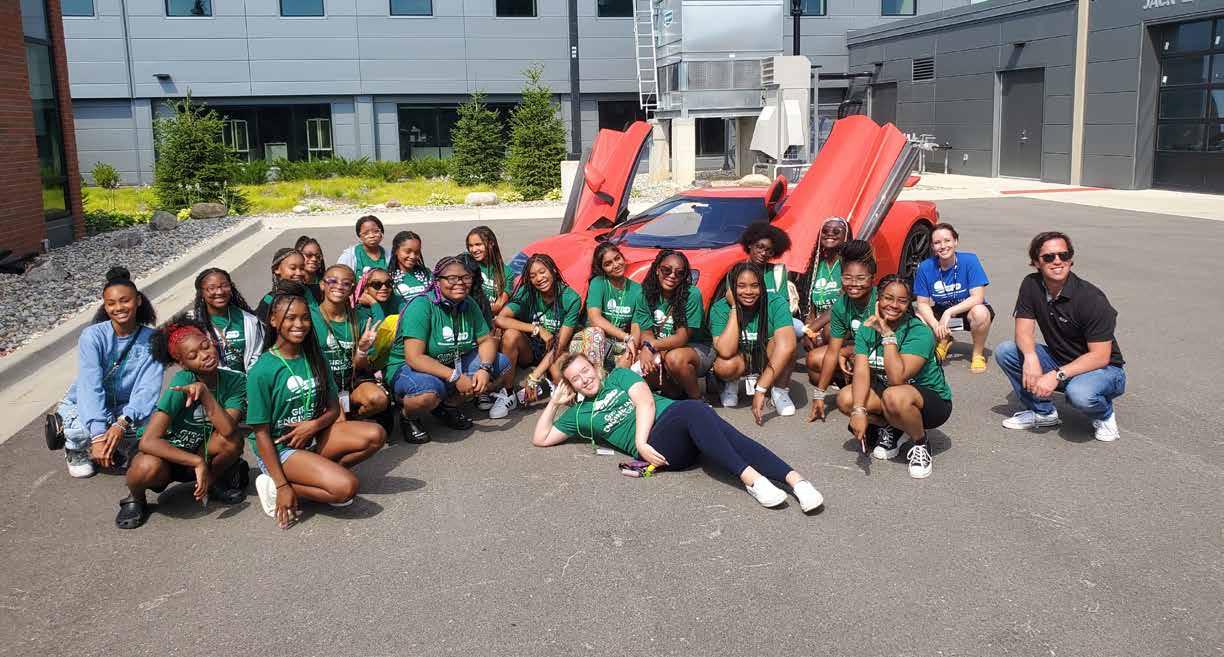
This year, the month-long summer programs divided the cohorts among three universities: Lawrence Techno

logical University (2017, 2020 and 2022 cohorts), Eastern Michigan University (2019 and 2021 cohorts) and Oakland University (2018 cohort). The closing ceremonies for the summer were held on August 6 and 7.
To find out more about the program, contact program director Dr. Gerald Thompkins at 248-353-0735, ext. 139, or gthompkins@esd.org. See more photos at esd.org/gea.
On Fridays, cohorts visit ESD’s corporate partners to experience industry first-hand. Above, the 2019 cohort visits Ford Motor Company. At a field trip to DTE Laboratories, students in the 2022 cohort participated in active learning experiments. The 2021 cohort on a field trip to Lear where they learned about engineering in the real world.

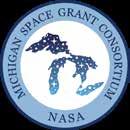


 Friendship and peer support is a key component of GEA.
Pre-calculus challenged girls in the 2018 cohort at Oakland Univ.
In DNA class, students created models using fun materials.
Friendship and peer support is a key component of GEA.
Pre-calculus challenged girls in the 2018 cohort at Oakland Univ.
In DNA class, students created models using fun materials.

Ford Motor Company invited the Girls in Engi neering Academy (GEA) students to attend the August 7 NASCAR Race at Michigan International Speedway in Brooklyn, Michigan.

Ford, in conjunction with NAS CAR, seeks to push forward the goal of gender equality and increased par ticipation in motorsport. According to Ford, “we want to inspire the next generation of young girls who want to create opportunity within the sport and make sure that they’re supported through role models and mentoring
and being part of the motorsport rac ing experience.”
The GEA students received a per sonal welcome from Ford’s Presi dent and CEO, Jim Farley. Mr. Farley talked about the importance of getting more women into STEM careers, and the need to attract more women of diverse backgrounds into motorsports and into engineering.
During the NASCAR invitation event, the GEA girls had an opportu nity to visit the racing pit area and the Ford technical racing communication center where the racing crew commu nicates with their drivers.
Ford President and CEO Jim Farley talked to the students about STEM careers. Girls in Engineering Academy Director Dr. Gerald Thompkins (far left) with GEA participants at the August 7, 2022, NASCAR race.The Engineering Society of Detroit Girls in Engi neering Academy (GEA) has entered its second year of participation in the NXG Youth Motorsports Academy. NXG, which stands for Next Genera tion Youth Motorsports, is a nonprofit based in Indianapolis and is designed to inspire, motivate and prepare 11- to 15-year-old underrepresented urban girls and boys, particularly African Americans and other minorities, for opportunities in motorsports and foundational life skills to be conscien tious young adults.
According to NXG’s president and co-founder Rod Reid, “By focusing on our mission to provide a STEM-aligned classroom curriculum with on-track performance and fun, NXG has been able to reach over 1,000 girls and boys during our 15-year history.” GEA was extended an invitation to participate in NXG in the spring of 2021.
The NXG Academy consists of experiential learning courses using go-karts as a teaching tool for driv ing, STEM education and applica tion. It helps students to develop self-discipline, decision-making, and communication skills. This year’s NXG Motorsports Michigan competi tion was held at Cass Technical High School in Detroit.
NXG is a two-day competition. The first day is devoted to classroom
instruction where student drivers learn the fundamentals and rules of motor sport racing and are administered a written test to compete, and the sec ond day of the competition is where students qualify to race and are timed by their track speed, and then they are prepared to drive.


Six GEA students participated in the NXG September competition, they were: Isabella Dease, Harmoni Jack son, Hayley Little, Je’Nia Mills, Nia Neal, and Phallon Turner. Nia Neal and Phallon Turner both received Gold Medallion Awards for their wins in the “Hot Box” race, which is a driving skills competition, and Isabella Dease was recognized for receiving a “perfect” score on her written NXG exam.
These young women will get an opportunity to drive and race in NXG’s competition in 2023. NXG
offers girls and boys a unique opportu nity to learn and participate in motor sports. The goal of the program is to inspire and encourage an inter est in STEM subjects and industries amongst schoolgirls, with the aim of increasing female participation in these sectors, using motorsport as a medium to expose them to the incred ible opportunities and career paths within the sport. “NXG’s goals and objectives align perfectly with those of GEA, and that is to encourage and excite girls to be active participants in STEM education and non-traditional, male dominated professions such as motorsports,” according to Dr. Gerald Thompkins, GEA Director.
 The six GEA students who participated in NXG.
PHILLIP LEWIS OF VALOR IMAGE PRODUCTIONS @VIP_PHIL
GEA Director Dr. Gerald Thompkins with Donna Carroll, Eli Lilly Senior Director for Global Engineering Services.
The six GEA students who participated in NXG.
PHILLIP LEWIS OF VALOR IMAGE PRODUCTIONS @VIP_PHIL
GEA Director Dr. Gerald Thompkins with Donna Carroll, Eli Lilly Senior Director for Global Engineering Services.
Back in March, ESD collaborated with DTE Energy on “Young Scientists Challenge Day” for Girls in Engineer ing Academy students. Ten engineers from DTE and more

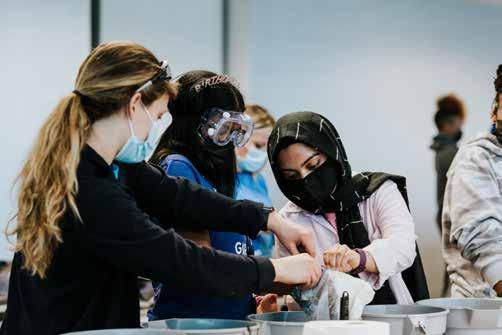
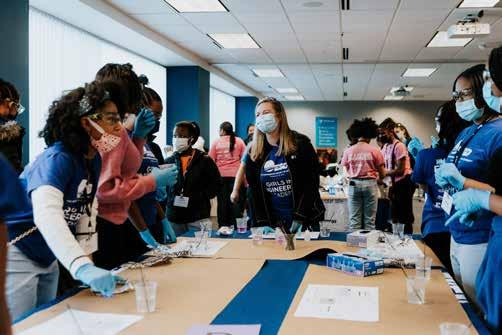
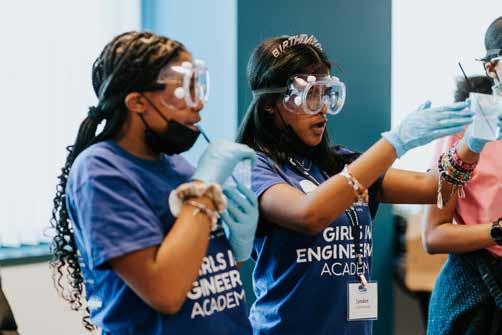
than 30 girls participated in the hands-on experiments, designed to highlight chemistry with household products. The girls had a great experience and learned a lot.

ESD held its annual “Link in the D” on July 28 for engi neering students and ESD’s corporate partners. It’s a chance for industry executives and engineering students to get to know one another in a fun, casual setting. The event drew nearly 300 students from all 15 engineering schools

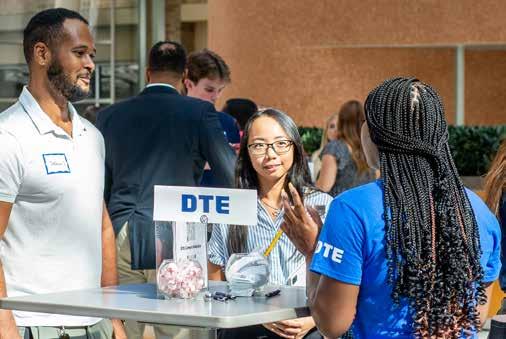
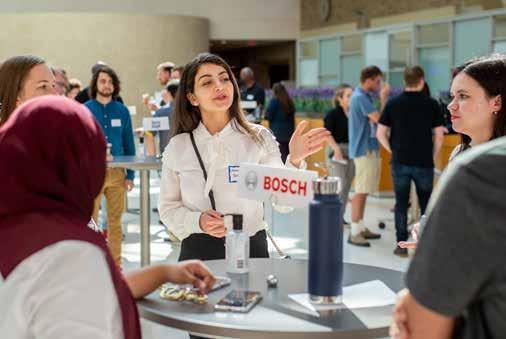

in Michigan, with each school sending at least 10 students. Twenty companies were represented. To build on the success, ESD is planning a follow-up event the first week of January. If interested in participating, please contact Heather Lilley at hlilley@esd.org or 248-353-0735, ext. 120.
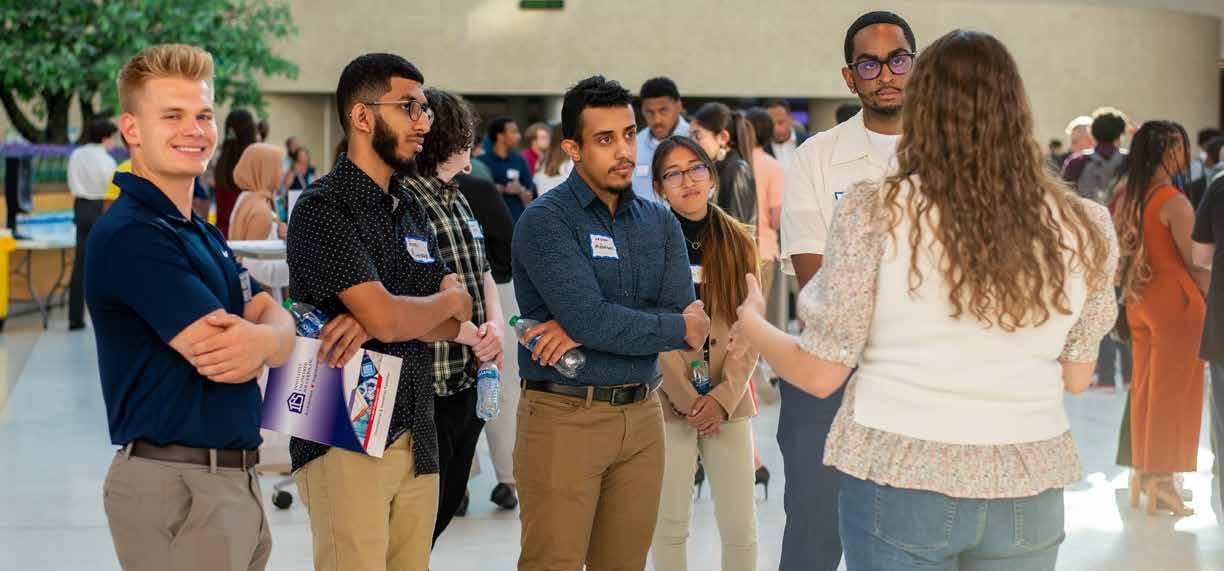
The Engineering Society of Detroit’s Annual Dinner cel ebrating our 125th anniversary was held on June 23 at Ford Field. Nearly 370 people attended the gala event. This was the first Annual Dinner since 2019 because of the pan demic. As a result, awards spanning 2020, 2021 and 2022


were all presented. A special congratulations goes to the recipient of the Horace H. Rackham Humanitarian Award, Jerry Norcia, Chairman and CEO of DTE Energy. DTE Energy was the presenting sponsor for the event. Thanks go out to DTE and to all of the evening’s sponsors.
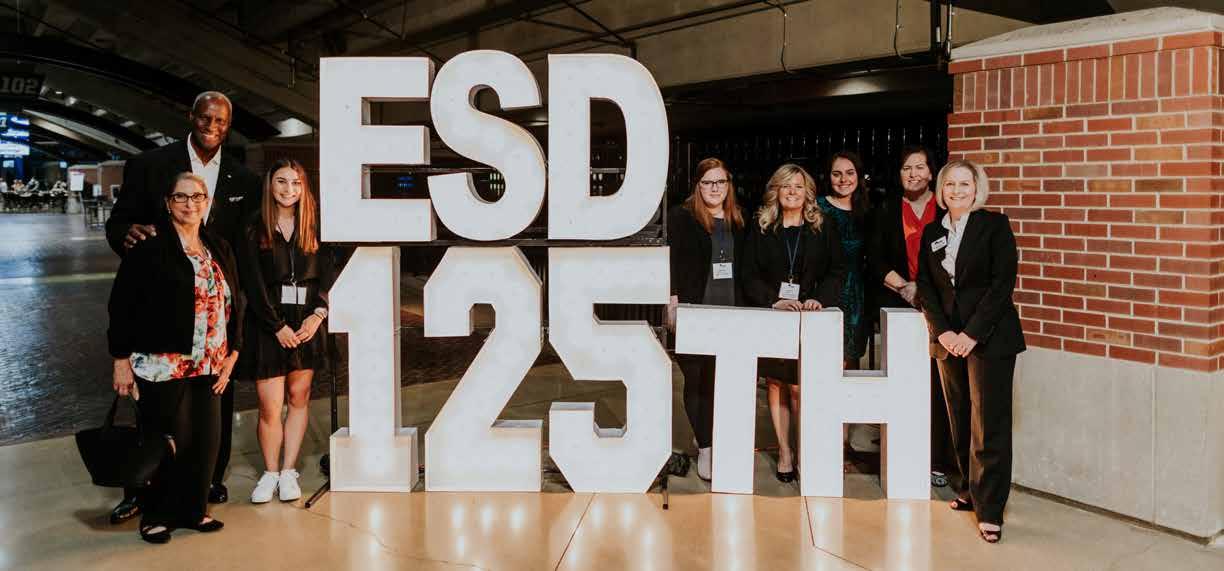 Members of ESD staff at Ford Field for the Annual Dinner.
ESD Board Vice President Bob Richard from DTE Energy with wife Dina Richard from Trinity Health.
ESD Executive Director Robert Magee (center) with mascots from the Detroit Lions and DTE Energy and event attendees.
Members of ESD staff at Ford Field for the Annual Dinner.
ESD Board Vice President Bob Richard from DTE Energy with wife Dina Richard from Trinity Health.
ESD Executive Director Robert Magee (center) with mascots from the Detroit Lions and DTE Energy and event attendees.
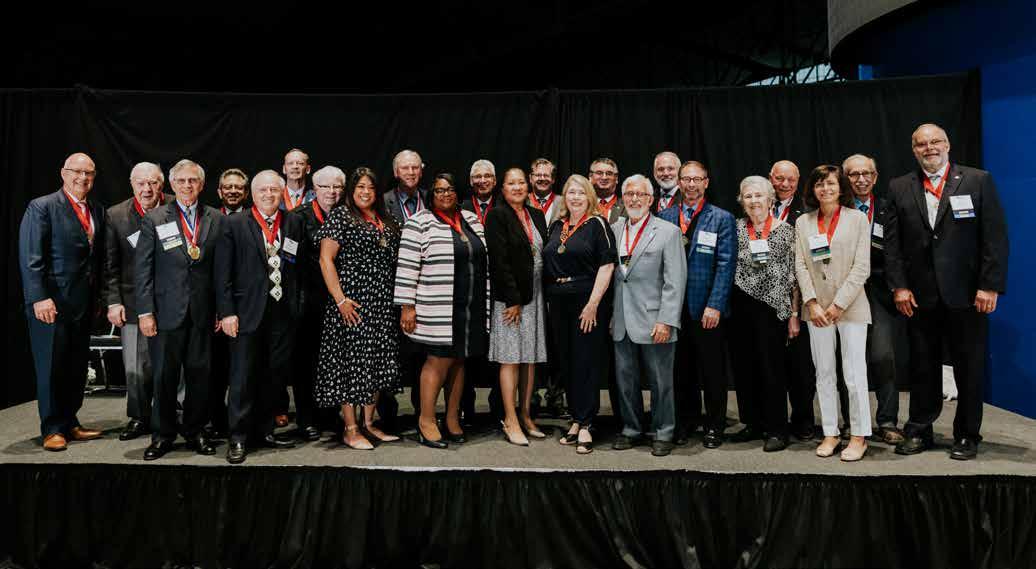
Jerry Norcia is the president and chief executive officer of DTE Energy. He is also chairman of the company’s board of directors. Prior to being named CEO in 2019, Mr. Norcia served as president and chief operating officer of DTE, responsible for strategic oversight and operations of the electric and gas utilities and the two large non-utility busi nesses. He has also served as president of DTE Gas and DTE Electric. He joined the company in 2002 as president of the Gas Storage and Pipelines business.
Prior to joining DTE, Mr. Norcia was vice president of business development for Union Gas. He has more than 30 years of experience in the energy industry, where he worked in executive leadership roles, business develop ment, engineering and operations.
Mr. Norcia earned a bachelor of science degree in chemical engineering from the University of Windsor.
A leader in the communities he serves, Mr. Norcia cochairs the United Way Campaign Cabinet and is a mem ber of the board of trustees of The Skillman Foundation, dedicated to the well-being and prosperity of children in Detroit. He also serves on the boards of Business Leaders for Michigan, the Detroit Regional Partnership and the Downtown Detroit Partnership.
As a board member of the American Gas Association, Edison Electric Institute, Nuclear Energy Institute and the Institute of Nuclear Power Operations, Mr. Norcia helps to shape the future of the energy industry.
 Jerry Norcia (center) receives ESD’s highest honor from ESD Presi dent Kirk Steudle (left) and ESD Executive Director Robert Magee.
ESD College of Fellows in attendance at the dinner.
Jerry Norcia (center) receives ESD’s highest honor from ESD Presi dent Kirk Steudle (left) and ESD Executive Director Robert Magee.
ESD College of Fellows in attendance at the dinner.
% Jerry Norcia, Chairman and CEO, DTE Energy
% Edward C. Levy, Jr., FESD, President, Edw. C. Levy Company
% Farshad Fotouhi, PhD, FESD, Dean of Engineering, Wayne State University
% Brett D. Irick, FESD, Retired, Manufacturing Engineering Manager, Ford Motor Company
% Adam Larky, PE, FESD, Senior Director—Engineering and Project Management, NW Natural Renewables
% William Moylan, PE, FESD, Fellow MSPE, Owner, Moylan Engineering Associate, Inc
% Richard L. Burns, FESD, Senior Vice President, NTH Consultants, Ltd.
% Michael G. Cummins, PE, FESD, President, Impact Engineering, Inc.
% Daniel E. Nicholson, PE, FESD, Vice President, Global Electrification, Controls, Software and Electronics, General Motors
% Mark A. Fetters, FESD, Service Manager, Shaw Electric / Shaw Systems & Integration
% Tarek M. Sobh, PhD, PE, FESD, President, Lawrence Technological University
% Hosep Torossian, EdD, FESD, Principal, AGBU Alex & Marie Manoogian School
% Kirsten Jordan, Crash Safety Engineer, Ford Motor Company (2020)
% Gautham Prasad, PE, SE, Structural Engineer, Ghafari Associates (2021)
% Katrin Bosch, PE, Project Engineer, Ruby + Associates, Inc. (2022)
% Vikrant Chiddarwar, VDDV Engineer, General Motors (2022)
% John Gallagher, Retired, Detroit Free Press (2020)
% Janice K. Means, PE, LEED AP, FESD, FASHRAE, Retired, Professor Emerita, Lawrence Technological University (2021)
% Thomas M. Doran, PE, FESD, Retired, Principal/Vice President, Hubbell, Roth & Clark, Inc. (2022)
% Ford Motor Company
% Urban Science
% Oakland University

% Michigan State University Interdisciplinary Science & Technology Building
Owner: Michigan State University
Designer: SmithGroup
Contractor: Clark Rockford Joint Venture
% University of Michigan, Biological Sciences Building
Owner: Regents of the University of Michigan
Designer: Ennead Architects & SmithGroup Contractor: Barton Malow
% AUCH Construction New Headquarters
Owner: AUCH Construction Designer: HED Contractor: AUCH Construction
% Beaumont Hospital Royal Oak Emergency Center
Expansion
Owner: Beaumont Health Designer: FreemanWhite & HED Contractor: Barton Malow
% Frank Rewold & Sons Corporate Headquarters (Honorable Mention)
Owner: Frank Rewold & Sons Inc.
Designer: Auger Klein Aller Architects Inc./SME
Contractor: Frank Rewold & Sons Inc.
% Ford Central Energy Plant (Honorable Mention)
Owner: DTE Energy Designer: OPN Contractor: Walbridge
Current members of the ESD College of Fellows line up to receive new inductees. Mark Fetters is shown above right.% Ford Motor Company Driving Dynamics Lab
Owner: Ford Land
Designer: Albert Kahn Associates, Inc.
Contractor: Walbridge
% Ford Motor Company Vehicle Performance & Electrification Center
Owner: Ford Motor Company
Designer: Ghafari Associates, LLC/Jacobs
Contractor: Stenco Construction
% Beaumont Farmington Hills – Master Plan Implementation
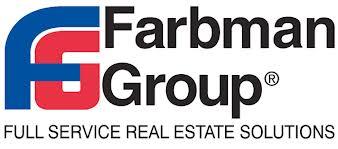
Owner: Beaumont Health
Designer: HKS
Contractor: Barton Malow/AIMS

% Henry Ford Health System Cancer Institute
Brigitte Harris Cancer Pavilion (Honorable Mention)
Owner: Henry Ford Health System
Designer: SmithGroup
Contractor: Turner Construction Company
% Zeiss Michigan Quality Excellence Center (Honorable Mention)
Owner: Zeiss
Designer: SmithGroup Contractor: The Christman Company
% Michigan State University STEM Teaching & Learning Facility
Owner: Michigan State University
Designer: Integrated Design Solutions
Contractor: Granger Construction Company
% Edsel and Eleanor Ford House Visitor Center and Administration Building
Owner: Edsel & Eleanor Ford House
Designer: SmithGroup
Contractor: Frank Rewold & Sons Inc.
% Glorious Cannabis Cultivation Facility (Honorable Mention)
Owner: Glorious Cannabis Company
Designer: Auger Klein Aller Architects Inc. & Strategic Energy Solutions, Inc.
Contractor: Brivar Construction Company
% University of Michigan-Dearborn, Engineering Lab Building (Honorable Mention)
Owner: University of Michigan
Designer: SmithGroup
Contractor: Granger Construction

 PLATINUM SPONSORS
PLATINUM SPONSORS


This year’s ESD Annual Dinner included the pre sentation of two 2022 Young Engineers of the Year. The award is given each year to one or more engineers under the age of 35 for outstanding contributions to the benefit of the engineering community. Past recipi ents include Donald Frey, who went on to design the Mustang, and Ralph Cicerone, who became a renowned authority on climate change and president of the National Academy of Sciences.
Katrin Bosch, PE, joined Ruby in 2013 after earning dual Bachelor of Sci ence degrees in Architecture and Civil Engineering from Lawrence Techno logical University. Since joining Ruby, Katrin has been promoted three times and is currently a Project Engineer.
Outside of Ruby, Katrin is an ACE Mentor for Detroit area high school students; she is a Cross Culture Part ner with the Treetops Collective; and a volunteer with the Humane Society of West Michigan where she serves as a dog foster mom. She also was a pan elist during the American Heart Asso ciation Go Red Goes STEM program for Detroit Public School District girls interested in STEM careers.
Katrin says “I was very hon ored to receive the Young Engineer Award from ESD along with Engineer Vikrant Chiddarwar for 2022. Read ing the nomination letters and being praised by mentors that I hold in such high regard was beyond special! I cer tainly could not have achieved what I have so far without my wonderful and supportive family and husband. I hope to continue further my knowl edge and promote the engineering profession to current students.”
Ruby + Associates celebrated 2022 Young Engineer of the Year Katrin Bosch (center, with flowers) by waving paper cutouts of her por trait at ESD’s Annual Dinner on June 23 at Ford Field. Katrin Bosch receives her award from ESD President Kirk Steudle (left) and ESD Executive Director Robert Magee.Mr. Chiddarwar works as a VDDV Engineer on the Electrification and Powertrain Thermal Management
1D/Systems team at General Motors.
Prior to this, he was a Simulation Engineer at Hyliion as well as being
a Product Development Engineer at both Siemens and Cummins.
Mr. Chiddarwar holds a bachelor’s degree in Mechanical Engineering from Vishwakarma Institute of Tech nology and a master’s in Mechanical Engineering from Michigan Techno logical University.
He was Vice Chair of the Ameri can Society of Mechanical Engineers Detroit Section from 2017-2020 and was selected for ASME’s prestigious Early Career Leadership Intern Pro gram in 2019. Mr. Chiddarwar is highly engaged with the Engineering Society of Detroit as past chair of the ESD Affiliate Council.
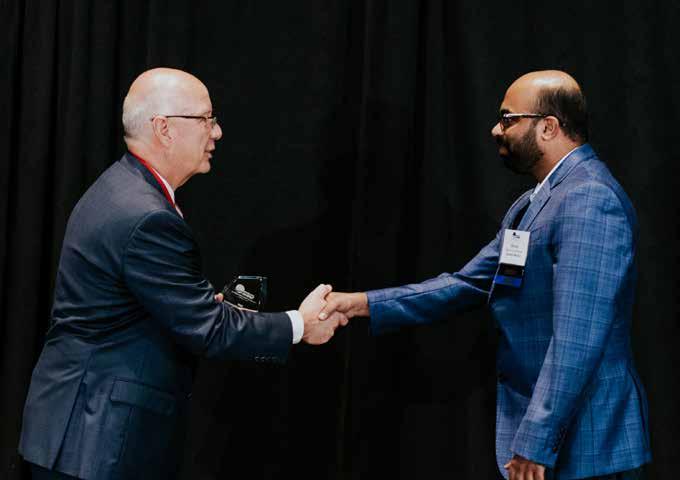

“It has been an honor to receive the Young Engineers Award for 2022 from a prestigious organization such as The Engineering Society of Detroit.” Vikrant says. “Being an auto motive engineer, I will cherish this moment for a long time to come. This award provides me with a sense of accomplishment for all the hard work I have put in over the last eight years after graduating from Michigan Tech. It also motivates me to continue the good work in the future as I embarked upon a new role at General Motors last year. “
ESD awarded six high school students and four college students each with $2,000 merit-based scholarships. Rec ognizing and honoring the future of our profession is key to our mission. Thank you to all of our donors who helped fund these scholarships!
% Hagop Alajajian, AGBU Alex & Marie Manoogian School, Southfield
% Eric D’Urso, Canton High School
% Patrick McGowan, Seton Hall Preparatory School, West Orange, NJ
% Tanisha Panchal, Troy High School
% Adam Schroeder, Allen Park High School
% Claire Swadling, Canton High School
% Brennan Burrows, University of Michigan
% Shashwat Maharjan, Central Michigan University
% Lauren Spahn, Michigan Technological University
% Grace Zalubas, University of Michigan
Vikrant Chiddarwar receives his award from ESD President Kirk Steudle (left) and ESD Executive Director Robert Magee. ESD President Kirk Steudle (left) congratulates Vikrant Chiddarwar on his award.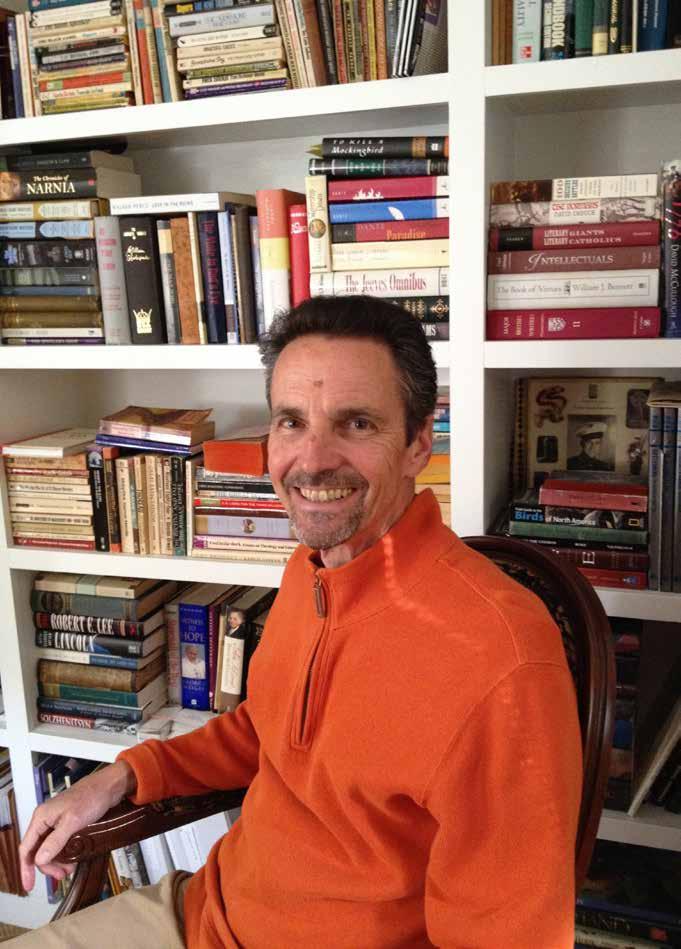
Thomas M. Doran, PE, FESD, has been awarded the 2022 John G. Petty Image Award. The annual honor is for individuals who have helped promote the engineering and technical professions through involvement in the community other ways of enhancing or publicizing the engineering profession. This can be done through mentoring, public service, and presentations to various groups as well as engagement in their professional societies by serving on committees or in leadership roles.
Doran has more than 40 years of specialized engineering and project management experience in water and wastewater treatment and infra structure improvements for munici pal, institutional, industrial, and private clients.
But engineering as a profession was not always a given. “When I was a young man trying to decide my future, I wasn’t certain what I wanted to do. My dad suggested engineering because I could make a good living at it,” Doran said. “At first, I questioned whether I was really interested in it, but then I got involved in environ mental and civil/infrastructure engi neering. That was fascinating to me because it included both engineering and many of the sciences, but it took some time. They say a high tide floats all boats. At Purdue, I wasn’t the most talented or committed student, but being around so many inspiring teach ers and fellow students eventually took root and lifted me too.”
Throughout his 40 plus year career, Doran has worked on hun dreds of infrastructure projects, always bringing creativity to the table
by asking, “What could go wrong?” This question inspires the project team to walk through many scenarios to bring about a better outcome and save clients time and money from unexpected consequences, especially risks to health and safety.
“Asking that question was some thing I began doing in a more disci plined way in the 1990s,” he said. “I’ve been drawn to incidents where that question wasn’t rigorously explored— some as close to home as the Flint water crisis and other more global
events like the pandemic. As I read and learn more about these types of situations, I find that asking ‘What could go wrong’ very early in the game, including engaging experts with no skin in the game, would lead to better outcomes. Better to ruffle a few feathers before a crisis occurs than live with dire consequences.”
Doran said asking the question does not mean problems won’t arise, but “Even if you can’t prevent them, perhaps you can reduce the impact of what can or does go wrong.”
Doran’s expansive career includes serving as an adjunct professor in civil engineering at Lawrence Tech nological University (LTU). He was also a principal and vice president of Hubbell, Roth & Clark, Inc., where he directed professional services for industrial, municipal, and educational facilities projects.
Among his many projects, Doran worked with the Ave Maria Founda tion in building a new university and 30,000-resident town in southwest Florida, where he was engaged in plan ning, cost containment, and value engi neering. Before this challenge, Mr. Doran was the founding president of McNamee Industrial Services before becoming a managing partner and then president of Tetra Tech/MPS.
In addition, he has managed domestic and international proj ects for Ford Motor Company, Gen eral Motors Corporation, Kellogg’s, Pfizer, and numerous municipalities in the Midwest. Many of Mr. Doran’s industrial waste treatment projects involved wastewater investigations, pilot studies, treatment process selec tion, and design.
This includes a project he recalls as one of his most satisfying endeav
ors. “I have had a lot of memorable projects and have been blessed to have been involved with a lot of projects with great people,” he said. “One that comes to mind is a water treatment project for an automaker in Mexico. The end result was that the water coming out of the industrial site was going to be a lot cleaner.
“The water exiting from the plant fed a stream where people used the water for washing clothes, and other uses. To know that we were improv ing the water for the people relying on it daily was impactful and significant to me. More often when we make an improvement, we don’t see the people using and benefiting from it.”
Other notable projects include the Central Campus Transit Center where he was the partner responsible for the joint University of Michigan/ AATA/City of Ann Arbor Central Campus Transit Center. The project included several green elements and stormwater improvement measures. He has also worked with numer ous Michigan municipalities, direct ing infrastructure and wastewater improvement projects for some of the largest municipalities in Michigan.
Highly interested in human rights, Doran said ensuring that engineering plays a role in helping populations is a priority because technology can be used to enhance human rights, but it also can be used to curtail or abuse human rights. “Technology in and of itself is neu tral but it can have bad uses too,” he said. “The question ‘are we using technology properly’ is essential. It is important for people to learn how to think, and that includes listening to contrary viewpoints on a subject. I’ve changed my mind after listening
to opposing views. And we need to learn to think to ensure that technol ogy is used correctly.”
So, does Tom have any words of wisdom for fellow engineers? “I would like to encourage other people in the technical professions to engage the public more and help them understand engineering – as well as the difference between evi dence-based conclusions and specu lation. If you do your homework, and are respectful, and strive to make technical subjects understand able to your audience, do not be afraid to get out in the community. You will surely learn things from the people who use the technology you select and design.”
Thomas Doran holds bache lor’s and master’s degrees in Civil Engineering from Purdue University and is a registered professional engineer. He is a fellow of The Engineering Society of Detroit. A for mer adjunct professor at the University of Detroit Mercy School of Engineering and the former Chairman of the Edi torial Board for TechCentury , Doran has been published in numerous forums, including Consulting Engineering , APWA Reporter, Chemical Engineering, Society of Automotive Engi neers, Detroit News , Detroit Free Press , Wall Street Journal , Washington Post, and Washing ton Times. He also taps into his creative side by writing fiction and has published six novels.
“I would like to encourage other people in the technical professions to engage the public more and help them understand engineering…

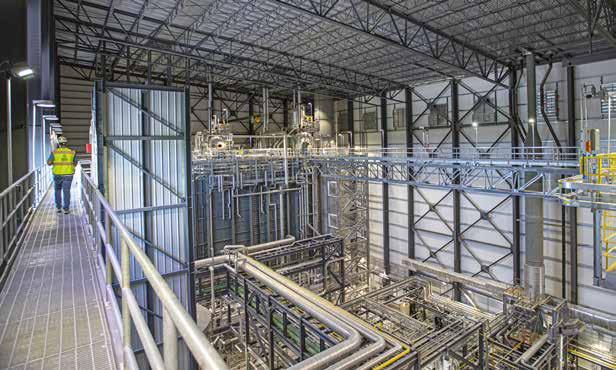

 Energy Park, Lansing, MI
Energy Park, Lansing, MI

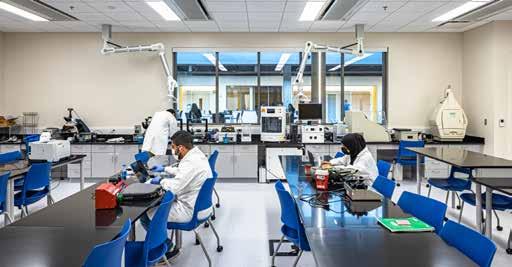
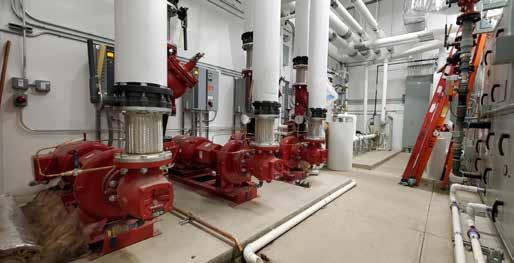

The business of building construction and design is going full force as we get back into the swing of things in 2022. The recipients of the 2022 Engineering Society of Detroit’s Construction & Design Awards—highly diverse in their project focus—have come through with shining colors, exhibiting creativity, modern technology, and stellar engineering teamwork.
Evaluated by an impartial panel of industry judges, repre senting owners, designers and constructors, the awards are among the premier recognitions presented to members of the construction industry and their projects. These awards are unique in that they honor the three primary members of the building team—owners, designers, and constructors— and recognize outstanding achievement and innovative use of technology.

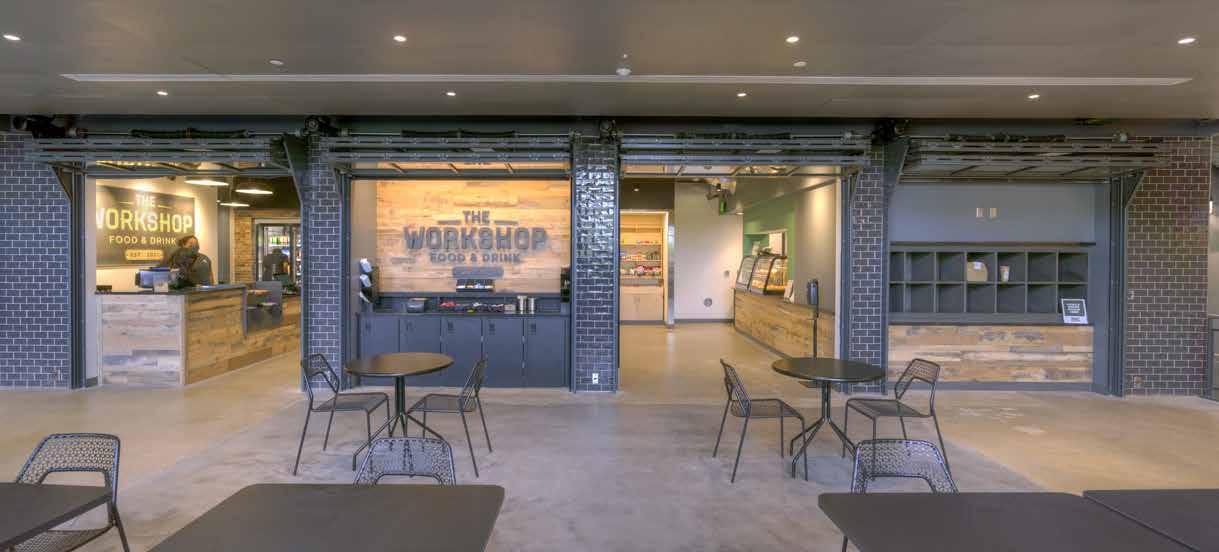
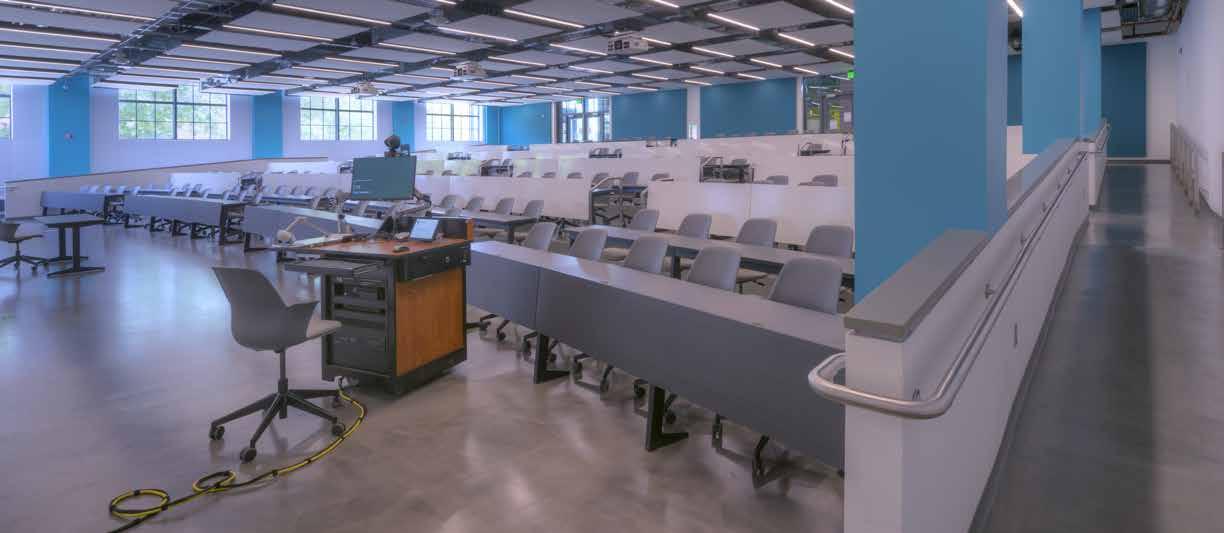
OWNER: Michigan State University
DESIGNER: Integrated Design Solutions
CONTRACTOR: Granger Construction Company
What began as an overarching goal to improve and enhance the undergraduate learning experience at Michigan State University resulted in an historic victory with the 2021 completion of MSU’s STEM Teaching and Learning Facility.
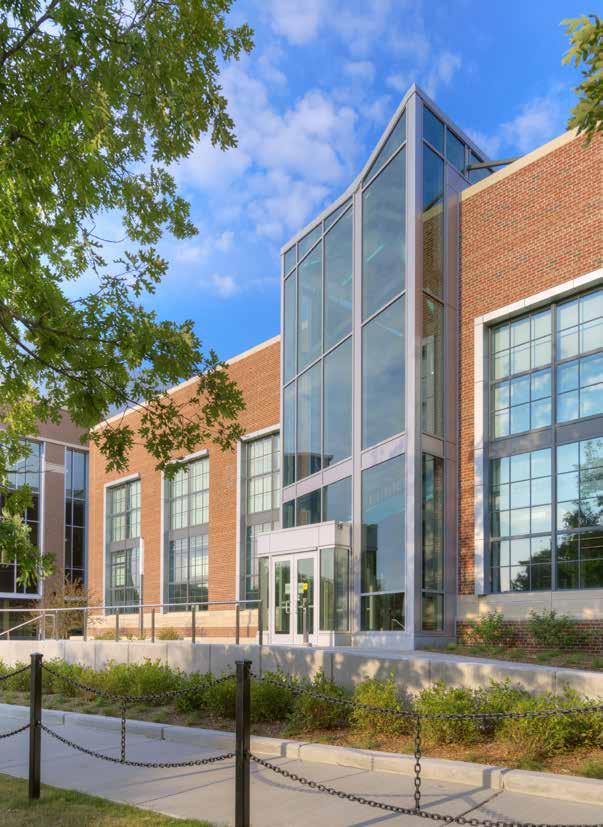
This was the first building on campus and the first in Michigan constructed with a newer mass timber framing product called cross-laminated timber (CLT). Additionally, the entire facility was constructed in and adjacent to the remains of MSU’s decommissioned Shaw Lane Power Plant, demonstrating an exemplary blend of adaptive reuse with state-of-the-art infrastructure and flexible learning spaces.
Situated next to Spartan football stadium, the hybrid mass timber and steel structure is an inspirational landmark, emphasizing the value of STEM curriculum. It also serves as a transformational learning environment and beauti ful bastion of innovative and sustainable building design. Encompassing 124,000 square feet of new construction with 49,000 square feet of renovated space, this project utilized the existing decommissioned power plant as the central por tion of the building, with large additions on the north and south sides.
Once the University settled on the site and the adaptive reuse approach, collaboration between the various MSU stakeholders, the design team and Granger Construction led the team to switch to a mass timber hybrid structural system – instead of the steel and concrete system originally planned – for the two new classroom and laboratory wings. For everyone involved – architects, engineers, construction managers, erectors and University representatives – this was their first mass timber building, and they embraced the chal lenge, as well as the opportunity, to harness the project as a learning laboratory to inform future mass timber projects on campus and across Michigan.
This was the project team’s first experience using mass timber. Numerous additional challenges required the team to be nimble: complex site logistics; the COVID-19 pandemic; adaptive reuse involving abatement of hazard ous materials; salvaging and repurposing artifacts and coordinating select architectural components to integrate the historical significance of the building into the overall design and character of the new facility. Despite all this, the project was delivered on time and within its original $110 million budget.
MSU’s STEM Teaching and Learning Facility opened its doors in July 2021 to a small cohort of summer students and to a robust population of fall students on September 1, 2021. The MassTimber@MSU program will monitor and report on students’ reactions to learning in the transformational space. In addition, the program will leverage lessons learned from the first mass timber project in Michigan, as well as ongoing mass timber research at the University, to support future mass timber projects through an array of education, outreach, and engagement activities.



The Edsel & Eleanor Ford Home worked with SmithGroup and Frank Rewold & Sons to create a new administration building and visitor’s center with expanded educational opportunities for the iconic Edsel Ford House.
The Edsel and Eleanor Ford House Visitor Center and Administration Building is designed to be net zero to pre pare it for future generations and honor the Fords’ vision of enhancing and sustaining the environment.

A comprehensive master plan to restore, reconstruct, and rehabilitate the 1920’s estate revealed a need to relo cate administrative functions from the existing home. The master plan proposed a new administration building and with further evaluation, identified a need for a new visitor’s center with expanded educational opportunities. Located on the portion of the estate that originally housed working greenhouses, the new buildings are adjacent to Ford’s cove and Bird Island, two prominent destinations for visitors to the estate.
Staying reverent to the historical nature of the estate, without being imitative, the new buildings are a delicate balance—subtle yet timelessly contemporary. The limestone walls, slate roofs, copper gutters, and wood trellises are richly textured and display the same quality and character the original home has. However, the detailing of the new buildings is more precise, honed, and machined to subtly reinforce the different eras the buildings represent.
The Administration Building is also designed to be net zero to prepare it for future generations and honor the Fords’ vision of enhancing and sustaining the environment. Sloped gables and mansard roofs conceal photovoltaic arrays, and solar panels, natural ventilation, automatic blinds, geothermal, and other sustainable strategies allow the administration building to achieve net zero energy, while both buildings are set to achieve minimum LEED Gold.
The project incorporates a stormwater management system that captures all stormwater on the site and filters it through a series of natural plant filters before releasing it back into a large lake. As a result, the water released is cleaner than the water already in the lake. Bird-safe glass is incorporated to keep birds from flying into the glass, as the project is in the migratory bird path.
As the first major alteration to the estate in 25 years, this new center honors the original design, reflects the home owners’ neighborly values, enhances the visitor experience,
and ultimately, prepares the estate for the next phase of its long life. Inviting guests to celebrate and learn about the past, present, and future at the Ford House will extend the Ford legacy for generations to come.

OWNER: Glorious Cannabis Company
DESIGNER: Auger Klein Aller Architects Inc. & Strategic Energy Solutions, Inc.
CONTRACTOR: Brivar Construction Company
In fall of 2019, Glorious Cannabis Company made the strategic decision to construct a new state-of-the-art con trolled environment agriculture facility. The site chosen was on a former landfill in Orion Township. The project was constructed to consistently grow high yields medical cannabis. Goals of the project included speed of construc tion, energy efficiency, optimal space programming, biosecurity, and ease of maintenance and operation. The resulting project is a spectacular 72,000-ft2 facility includ ing state-of-the-art technologies and systems.
One notable highlight is SES design of a laminar flow supply air distribution system through a pressurized ple num wall and perforated diffusers to provide even drying
of harvested plants. In addition, the spaces are air-tight, completely waterproof, and designed for bio security.
Despite being a controlled-environment agriculture facility, Glorious Cannabis consumes very little water. Thanks to a dehumidification condensate water reclama tion system, a majority of the 10,000 gallons of water used daily is recycled and reused. After the plants uptake irriga tion water, they transpire it back into the environment. The high-performance dehumidification system pulls moisture from the air and collects it in a central location before cleaning it, mixing it with fertilizer, and sending it back to the plants for watering. The facility approaches net-zero water consumption.
OWNER: University of Michigan
DESIGNER: SmithGroup
CONTRACTOR: Granger Construction
The engineering program at the University of Michigan Dearborn required a new, more modern building to meet the demands of its students and faculty who needed a facil ity that can evolve with rapidly changing technologies.
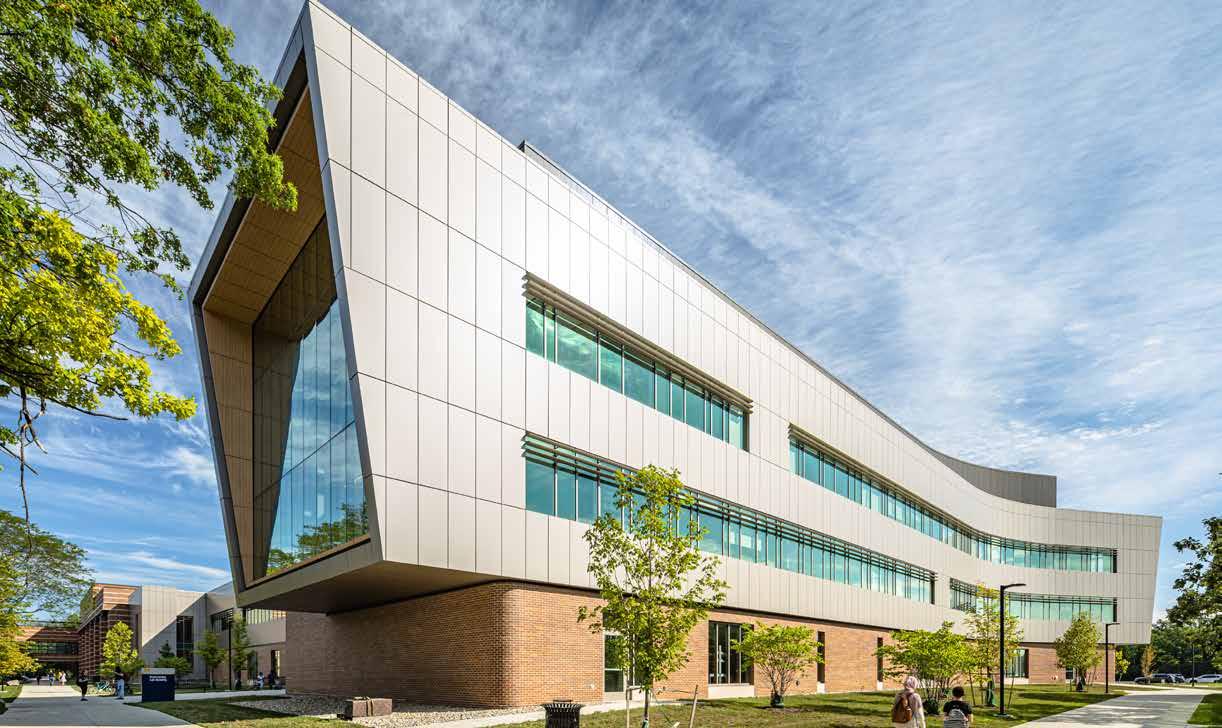
The project can be broken into three components: a high-bay building renovation, a three-story addition, and a large double height atrium to connect them. This threepiece composition is nestled between two adjacent build ings, one of which connects. The form and materiality of the exterior design integrate with the most-recent engineering building on campus, unifying the engineering quad.
Collaboration is the key driver of this building. The class rooms have adaptable layouts to encourage student collabo
ration, and state-of-the-art labs allow for faculty research with student involvement. The atrium extends and enve lopes a main pedestrian pathway, opening to the vehicular and pedestrian sides of campus.
The intention is to enable cross-program integration by having students move through the building, instead of around it. Labs with large apertures, classrooms, student collaboration and display spaces, as well as a large digital display, are organized along this path.
In addition, the atrium provides opportunities for com petitions, community outreach and recruitment events. The design reinforces this area as the heart of engineering and student life on campus.
Can preserving historic buildings be good for the environment? According to the Wash ington State Department of Archaeology and Historic Preservation’s Sustainability and Historic Preservation Executive Summary, “In the United States, 43% of carbon emissions and 39% of total energy use is attributed to the construction and oper ation of buildings. The environmental impact of buildings is even more signif icant when we take into consideration the greenhouse gas emissions asso ciated with manufacturing building materials and products. As a key ele ment in sustainable development, the preservation, reuse and ‘greening’ of existing, historic buildings presents excellent opportunities to reduce our nation’s energy consumption and car bon emissions.”
And if you ask Mike Kirk, principal at Neumann/Smith Architecture, and a noted expert on historical preservation, he would agree. “We’re a throw away society. Especially in Michigan where we have the car mindset of having to always have something new. There are always new ver sions of cars,” he said. “If you go to Europe the buildings are 500 to 1,000 years old. Every 80 years or so, they renovate or touch up the inside, but the building itself was made to last. America is an adolescent, young, and we will soon learn the importance of preserving and building for longevity.”
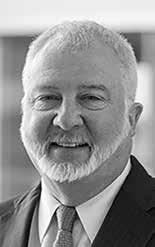
A long-time preservationist, Kirk worked on campaigns to save dozens of historic buildings in downtown Detroit. In most of Kirk’s Detroit renovation building projects— these include the Wright Kay Building (Schwankovsky Temple of Music, 1891), and Detroit’s Skillman Branch Library—he incorporates the old with the new.

“My college degree was half preservation and half passive solar design. People said I was schizophrenic, but honestly, it’s all about resource conservation. Try ing to save and reuse buildings is the biggest way we can conserve energy and contribute to minimizing climate change,” Kirk said. “In 50 years of working in the field, I have only encountered two to three buildings that could not be saved. For the 300 plus others, we found a way to reuse them.”
Historic preservation has a reputation of being expen sive, Kirk said, but repairing, restoring and updating estab lished buildings actually saves money. For one, the older materials and construction methods from 100 years ago were sturdier and had longevity in mind.
“Think of a pocket door in an historic home. They are sturdy, well-constructed and have stood the test of time,” he said. “Now things are built for 20-30 years of use.”
In addition, demolishing older buildings have costs involved in disposing of materials, adding to landfill issues and environmental concerns.
Yet, another key factor in historical preservation, Kirk said, is the location of the buildings and the effect on building community. “Sustainability is not just energy. We need sustainable communities. Many historic buildings are located in centralized areas with water, sewer, travel to the building all part of the investment, and already in place,” he said. “It’s an investment in the community.”
“Think of the places we all like to visit; what draws you to a place—it’s those towns, cities and buildings that have a sense of time attached to them. Those places where we feel like people have lived. Those are the places people seek out. And we need to preserve them in our communities.”
Mike Kirk The first public library branch in Detroit, now called the Rose and Robert Skillman Branch.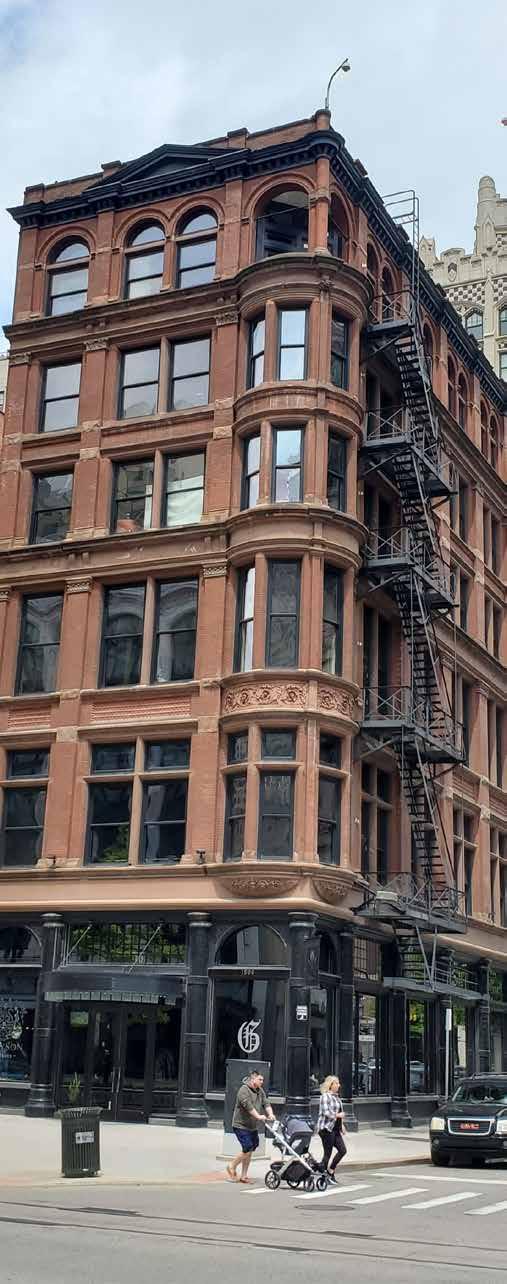
Founded in 1979 in the Department of Geography and Geology, Eastern Michigan University’s His toric Preservation Program is among the largest graduate programs in Historic Preservation in the United States.
Students in the program learn to document, preserve, and interpret hi storic structures, objects and places within the context of their cul tural landscape setting.
Students gain a range of practical experi ences, including most forms of preservation documentation, while addressing the real needs of local communities. In this way, the program prepares students for professional service in the fields of preservation planning, historical admin istration, heritage interpretation and cultural resource management.
The hallmark of the program has been its con tinued commitment to providing needed services to communities. The program has assisted over fifty Michigan and Ohio communities with:
% Surveys of their historic resources
% National and state register nominations
% Materials conservation, preservation, and interpretive plans
% Numerous other preservation-based activities
The program is the recipient of multiple state awards, including the “Education/Insti tution Award” from the Michigan Historic Preservation Network, and the “Lucy Hamilton Education Award” from Preservation Detroit, Detroit’s leading preservation organization, both for contributions to historic preservation in Michigan.
The program is certified by the National Council for Preservation Education. Its Master of Science in historic preservation (36 hours) offers concentrations in preservation planning and administration; heritage interpretation and museum practice; and recording, documentation, and digital cultural heritage. The program also offers a 12-hour graduate certificate in historic preservation and an undergraduate minor in his toric preservation.
The Wright–Kay Building, originally known as the Schwankovsky Temple of Music, is one of the oldest buildings in downtown Detroit. It was designed by Gordon W. Lloyd.The construction industry in the United States represents 4.1 percent of the work force yet accounted for 21.2 percent of U.S. on-the-job fatalities in 2020. Lawrence Technological University’s engineering fac ulty has responded by creating a new Construction Safety Research Center (CSRC).
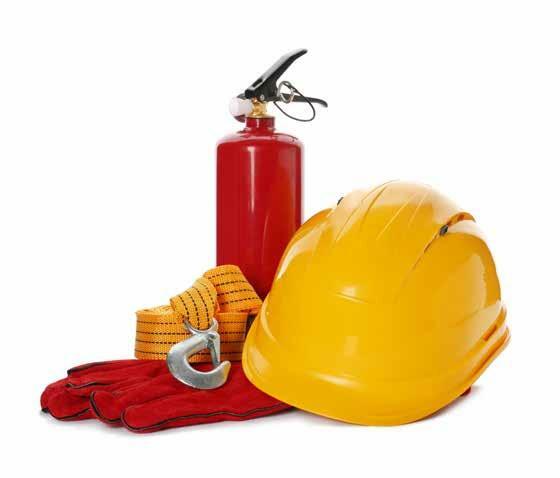
And after consulting with its founding members, the CSRC has decided on the focus of its first research project: the inappropriate use of personal protective equipment, or failure to use PPE at all. The first step of the research was a national expert survey to identify and rank potential factors. This step identified 16 factors that contribute to PPE non-compliance. Top among them: inadequate supervision and lack of weather adaptation.
The CSRC also conducted a focus group study with construction firms in Michigan to validate the survey findings and propose recommendations to overcome them. A white paper based on this research is planned for release this fall.
The CSRC’s founding director, Ahmed Al-Bayati , assistant professor of civil and architectural engineering at LTU, thanked the individuals and firms who have participated in the study:
Brian Carson, Safety Director at the Roofing Contrac tors Safety Alliance,
Dale Ave-Lallemant, Safety Director at Clark Construc tion Co.,
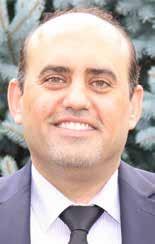
Greg McKinney Jr., Safety Director at Davis Construc tion Inc.,
Jim Spaulding, Safety Director at Dee Cramer,
Joe Wallington, Project Safety Manager at Christman,
Mary Shepherd, Environmental and Safety Services Supervisor at the Department of Public Works, City of Sterling Heights,
The CSRC is a membership-driven collaboration of companies, municipalities, associations, and agencies that aims to reduce work-related fatalities and injuries by providing innovative safety practices derived from ground-breaking research. The CSRC has a process that helps industry leaders contribute to better safety performance so they can transfer their knowledge and extensive experience into products that save lives and improve overall industry performance. The CSRC exists through the outstanding safety commitment and generous support of the center’s founding members:
Bouma Corporation, a Grand Rapids construction con tractor
Carhartt, Inc., a Dearborn-based maker of work apparel
DTE Energy, Michigan’s largest utility
RBV Contracting, Inc., a Detroit construction firm
The City of Kalamazoo
The City of Southfield
Lawrence Technological University is one of only 13 private, technological, comprehensive doctoral universities in the United States. Located in Southfield, Mich., LTU was founded in 1932, and offers more than 100 programs through its Colleges of Architecture and Design, Arts and Sciences, Business and Information Technology, and Engineering. PayScale lists Lawrence Tech among the nation’s top 11 percent of universities for alumni salaries. Forbes and The Wall Street Journal rank LTU among the nation’s top 10 percent. U.S. News and World Report lists it in the top tier of best in the Midwest colleges. Students benefit from small class sizes and a real-world, hands-on, “theory and practice” education with an emphasis on leadership. Activities on Lawrence Tech’s 107-acre campus include more than 60 student organizations and NAIA varsity sports.
Mike Miller, field superintendent at Dee Cramer, and Tanisha Johnson, Safety Manager at O’Brien Construction Ahmed Al-Bayatioday, climates are changing at unparalleled rates 1 and fossil-fuel energy is becoming increasingly expensive and unfavored. We are experiencing unprecedented droughts, flood ing, heat waves, wildfires, mud slides, and increased disease, as well as more violent and more fre quent storms. 2 Extreme weather events are expensive and cause loss of human lives. 3 Multiple catastrophic events are also occurring simultaneously, stressing the ability of governments to respond and insurance companies to pay. How can we adapt to these changes?
Climate Change is causing an existential need for designers, builders and building operators to adapt build ings to increase occupant safety and provide resilience for both the structure and the operations they house. Here are some basic strategies for adapting to increasingly hotter climates 4 , extreme weather events, and increas ingly expensive and unreliable energy. These strategies go beyond simply installing white roofs, planting trees, and increasing insulation to protect occupants and buildings from high temperatures.
Base designs on projected climate changes and extreme weather events.
Designers use building codes and standards based on historic weather data gathered over a 30-year period to specify insulation levels and other design elements for both safety and energy efficiency. The sizing of heating, ventilat ing and air conditioning (HVAC) equipment is also based on the 30-year weather data. With a rapidly changing environment, which can be thought of as “chronic” climate change, it is important to anticipate future likely devia tions from the historic data, evaluate their threat, and then determine the appropriate response in view of the risk tol erance of our clients.
To address an increase in cooling needs, it is important not to over design. ASHRAE recommends creating flex ibility in HVAC and other building systems so they can perform under varying conditions. Use redundant systems,
The thermal climate zones shown by color in this diagram are based on the 20-year average between 2000-2019. The white dots show where the zone has gotten one zone warmer compared to an earlier 20-year period 1980-1999. Black dots show move ment to one zone cooler. Reprinted by permission. Michael Roth, Klimaat
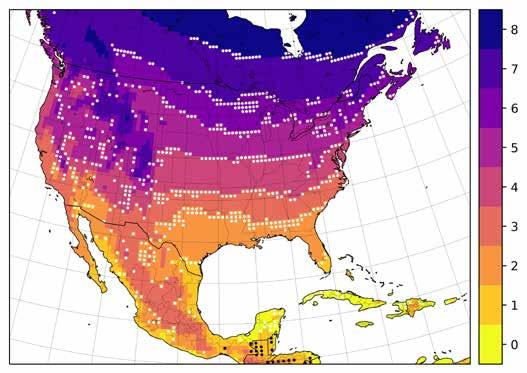
e.g., instead of installing a single large chiller or boiler, install multiple chillers or boilers to be staged on and off as needed. Provide space to add additional equipment (chill ers) as they may be needed for cooling in the future. Don’t oversize; equipment life is usually about 30 years.
The other aspect of climate change involves ‘acute’ changes, including extreme weather events, i.e., heat waves, floods, violent storms, and wildfires. These events have traditionally been categorized as rarely occurring events, e.g., a 100-year flood. However, extreme weather events are now occurring more frequently and with greater intensity, and thus must also be evaluated—and actions taken for design and operational changes assessed—in view of the risk tolerance of clients.
As an example, anticipate potential flooding (even where flooding has not occurred) and provide protec tion for the building as a whole and also for electrical and HVAC equipment. Recognize that what were 100- or 200year floods are expected to occur much more frequently.
https://www.theguardian.com/us-news/2020/jun/16/climate-deaths-heat-cdc
Areas which have historically been free from flooding are already experiencing flooding. This also goes for hur ricanes and other extreme weather events which exert excess wind pressure and dump excess water onto, and potentially into, buildings. Protect buildings near potential flood areas by elevating them on stilts and pilings. Care fully evaluate building enclosure materials and arrange ment for resilience. Place electrical and other building equipment and machines in areas where they will not be damaged by flooding. Better still, don’t build or rebuild in areas where flooding is expected to be an issue.
Carefully design safe refuge areas within buildings to provide a safe haven during weather emergencies. This may involve heavier structural construction and locating these areas away from windows and above potential flood levels.
In the United States, we design as though there will always be dependable, relatively continuous power to handle HVAC and other powered building systems. Yes, we do specify on-site generators for backup, but designers must carefully consider how to handle changes in both the sources and reliability of tomorrow’s power. The choice of energy sources depends on anticipated rising energy costs, increased likelihood of more frequent grid power brownand black-outs, concerns over harmful emissions, and both climatic and political forces affecting energy costs and sup ply. There is also a move to select equipment only powered by electricity to accommodate and ease the use of alterna tive energy sources.
Borrow designs from vernacular architecture 5 for creating comfort and safety, to reduce HVAC equipment required while still providing resilience.
Since the industrial age began and fossil fuel became relatively inexpensive, buildings were often constructed ‘in spite of’ instead of ‘in tune with’ their climate. Whereas vernacular buildings were constructed of locally available materials and developed to use the local climate to advan tage in creating shelter and comfort.
The principles used in vernacular architecture first have to do with shielding buildings from the undesirable ele ments: Sun Shielding , Wind Shielding and Heat Shielding . Other principles are used to enhance and use natural condi tions to advantage: Solar Gain, Air Ventilation, Natural Con vection and Evaporative Cooling . Additional strategies for construction providing resilience, e.g., during dust storms,
wild fires, flooding and other types of storms or earthquakes, apply what can be called Specialized Construction . A few examples specific to the comfort and safety of occupants and building resilience are summarized below. 6
Sun Shielding: South-facing overhangs were recom mended by Socrates in ancient Greece and applied by 12th century Pueblo builders and cliff dwellers in the desert Southwest. Use south-facing overhangs (northfacing for the southern hemisphere) to provide shade from the high-climbing summer sun, but of such length to allow the sun’s warm rays to penetrate in winter when the sun stays lower in the sky. Large overhangs also provide some protection from driving rain.

Sun shading can be designed to be responsive to sun position.

“Across the country [U.S.], heat caused at least 10,000 deaths between 1999 and 2016—more than hurricanes, tornadoes or floods in most years.”Cliff dwellings at Mesa Verde National Park.
Wind Shielding and Heat Shielding: Use operable window shutters. Shutters are mounted on the exterior of windows to help block heat gain in summer, as well as to protect from wind and rain during storms. Insu lated shutters help to prevent unwanted heat transfer. American colonial homes used both exterior operable shutters as well as interior shutters which fold into a wall cavity (an embrasure) on either side of the window. Modern versions of exterior shutters, often electrically operated, are now available to provide protection from extreme wind during storms and are becoming popular in the Southeast to protect during hurricanes.


(Direct) Solar Gain: Socrates also recommended orient ing the bulk of openings (windows) in northern climates to the south-facing façade. West-facing windows provide solar gain, but also cause afternoon overheating and should be minimized as the climate heats up.
Heat and Wind Shielding: Some of the earliest ancient homes in regions experiencing both winter cold and summer heat were called pit houses. Partially built underground, this design helped to moderate interior temperatures. Socrates also recommended protect ing the north-facing façade from wind. Building into a south-facing hill or adding berms or a vegetated roof can be incorporated into modern buildings. Due to flooding in areas not previously vulnerable to flooding, this option should be carefully analyzed.
(Directed) Air Ventilation and Evaporative Cooling: Middle East builders have combated extreme heat for centuries using “Malqaf” or “Badgir”, commonly called wind catchers, wind towers or wind scoops. Malqaf are towers having openings close to their top which face prevailing wind directions. They are used in combina tion with strategically placed openings at lower levels

of the building. “Badgir” are similar, but have openings in multiple directions with air flow down on one side of a split and up and out the other. Often, windcatchers are combined with openair interior courtyards with water features, e.g., foun tains, which help to provide evaporative cooling during low humidity or simply con vective cooling when the warm air travels over the cooler water. Open courtyards with water features were also used for cooling in the first century by the Romans. As temperature averages increase—especially in drought areas—this strategy is life-saving for occupants, thus increasing safety. The World Health Organization (WHO) considers heat waves ‘among the most dangerous of natural hazards’, citing 70,000 deaths in France in 2003 during just one heat event. 7
Ventilation and Evaporative Cooling: Carefully con structed coverings with small openings of lattice work covering their entire surface have also been historically used in the Middle East, India and the Orient. These lattice openings have several names and are used to pro vide a venturi effect (accelerating air flow by narrowing its passageway) to create passive cooling. Recent stud ies using Computational Fluid Dynamics (CFD) has shown that curved parts in these structures accelerate the air flow to a greater degree than non-curved parts. 8 They are decorative, provide privacy, come in many designs and often have openings the same width as the
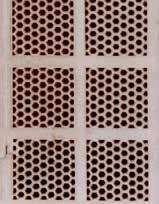
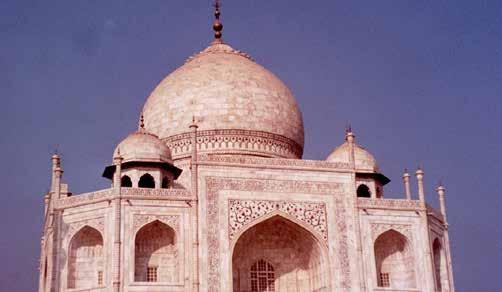
“When we look at what is truly sustainable, the only real model that has worked over long periods of time is the natural world.”
—Janine Benyus, author of Biomimicry: Innovation Inspired by NatureExamples of exterior and interior shutters The Taj Mahal with an inset detail of lattice work A badgir
thickness of the covering. They, like wind catchers, are sometimes used in conjunction with other strategicallyplaced openings and with air flow over jars holding water to effect evaporative cooling.

Natural Convection: The next example is not preindustrial/vernacular, but employed principles from vernacular archi tecture. Locally, the Lawrence Technological University-owned Affleck House, designed by Frank Lloyd Wright, was also designed with natural cool ing strategies. Horizontal ‘win dows’ in the floor could be opened to allow outside air from an area shaded by a cantilevered section of the house. This shaded area under the house also contained a water pool which aided the cooling effect as air passed over it. Entering air would then rise by natural convection to higher levels of the home to be exhausted by opening windows. The high clerestory windows found in the kitchen area of the home were once oper able to assist in expelling hot air from the structure. Other strategies for natural convection with air stratifi cation use ‘solar towers’ to help pull the air up, through, and out of a building, taking advantage of the natural stack effect.

Specialized Construction: The 200-year-old design of Eastern Indian/Pakistani buildings called “Bhun gas” (still being constructed today) withstand multiple earthquakes, dust storms, drought, persistent rains and floods. Their cylindrical shape results in a reduced surface area to volume, and this, with their thick clay walls, also reduces heat transfer, keeping occupants more comfortable in both high and low temperatures. Being circular, without square corners, these structures can better withstand lateral forces. Their construc tion, topped with thatched (straw) roofs, provide large overhangs to protect against rain and they not only fare better than newer concrete buildings in earthquakes, but they also last longer and moderate temperatures better. 9 The Incas also constructed earthquake-proof buildings at Machu Picchu in present-day Peru. They used precisely cut and precisely-placed rock blocks held in place by gravity without mortar. L-shaped blocks ‘locked’ in the outside corners. In some cases, they built curved corners. The trapezoidal, inward tilting windows and doors also contributed to the earth quake-proof design. 10
Only a handful of vernacular passive strategies have been exemplified here. There are many others.
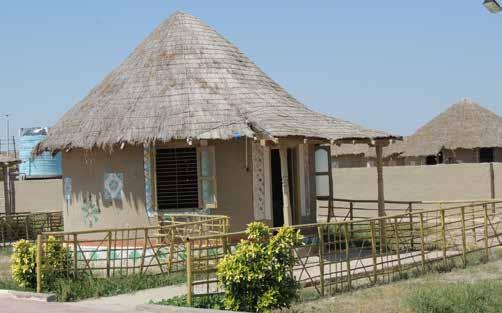
Look to nature and employ biomimicry. Nature is both sustainable and resilient. “Sustainable” literally means maintainable and regenerative, while “resil ience” can be thought of as something which is durable, flexible or sturdy. We can mimic nature to create both sustainable and resilient buildings, but to do so we need to change from our one-way “economy of waste” to follow nature’s “circular econ omy”, where waste from one system is literally fuel for the next system.
Nature is also complex and typically doesn’t build in ‘straight’ lines or create square-cornered boxes.
There are innumera ble opportunities to apply nature’s systems to our built environment; only a few examples follow.
Mimicking nature has been used for past building design, e.g., in Leonardo da Vinci’s time, to inspire domes based on egg shells. 11
Some of the most intriguing structures
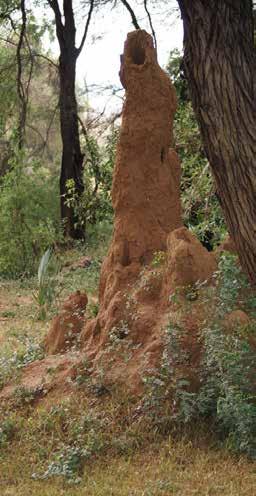 Frank Lloyd Wright’s Affleck House floor windows and clerestory win dows (top photo).
Termite Mound
PHOTO
“Bhungas” withstand earthquakes and other natural disasters.
Photo
Frank Lloyd Wright’s Affleck House floor windows and clerestory win dows (top photo).
Termite Mound
PHOTO
“Bhungas” withstand earthquakes and other natural disasters.
Photo
are built by termites in Africa. They construct huge mounds extending from underground to several feet above ground with a complex series of tunnels and chimneys. This becomes their home, funeral gardens, and a place to grow and house their food: fungus. The fungus must be kept at a constant temperature and humidity and be well-ventilated to grow and survive. The walls of the mound must withstand the weather and gravity while being porous enough to provide the necessary ventilation for the termites and fungus. The shape of the mounds is between triangular and a trapezoid with safety factors of between 50 and 100 for strength. Engineers typically use safety factors of 3 or less. 12 Their structures, therefore, are strong and climate controlled with close tolerances. The “Eastgate Center” building designed by Mick Pearce, in Harare, Zimbabwe, Africa employs this example for natural heating, cooling and ventila tion.
13
British architect, Nor man Foster, designed “The Gherkin” build ing in London, taking a cue from the Venus Flower Basket sponge. Following the struc ture of the sponge’s hollow basket-shape, the building exhibits exceptional wind load resistance—advan tageous during high wind events—and eases the flow of natu ral ventilation. 14
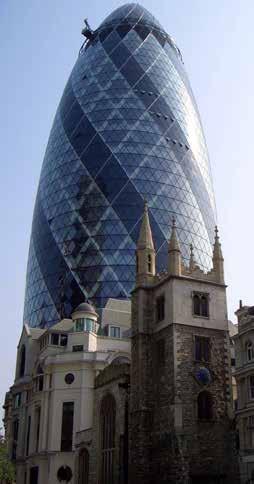
This article only scratches the surface on what global warming is causing and ways to increase safety and build ing resilience to address this change, e.g., increases in both heat and humidity also cause increases in insect populations and disease, and wildfires create air pollution issues. There are many other approaches including high tech solutions, among them; the use of enhanced build ing simulation and monitoring, installation of renewable energy sources, and evaluations using Computational Fluid Dynamics (CFD), Virtual Reality ( VR), Augmented Reality (AR), and Mixed Reality (MR).
1. Recently, climate zone boundaries moved about 100 miles toward each pole and in 2016 a new Climate Zone “0” was added to the ASHRAE climate zone classifications to accommodate especially high temperature areas, as shown in the map at the beginning of
the article. Also see ASHRAE Standard 169-2021, Climatic Data for Building Design Standards for access to the climate zone maps.
2. Global warming is a multiplier of the frequency and severity of most of these events. Warming temperatures result in more water being evaporated into the atmosphere which, in turn, results in heavier precipitation and more water being dumped dur ing storms. Unusually warm temperatures in the arctic regions (which are heating up faster than the rest of the earth) cause melting of permafrost undermining building foundations and releasing methane (one of the greenhouse gasses, GHG) into the atmosphere. ASHRAE 2021 Fundamentals Handbook, Climate Change Chapter, Overview of Climate Change section.
3. NOAA keeps track of billion-dollar extreme weather events in the United States. In 2021, there were 20 such extreme events causing 724 fatalities and costing $148 billion. The average billion-dollar events per year since 1980 was 7.7, however, the average per year since 2017 is now 17.8. Billion-Dollar Weather and Climate Disas ters | National Centers for Environmental Information (NCEI) (noaa.gov) accessed 5/30/22
4. The average world temperature has increased by 2.27ºF (1.26ºC) since late 1850. IPCC 6th Assessment Report - The Physical Sci ence Basis | Climate Matters https://www.climatecentral.org/ climate-matters/ipcc-6th-assessment-report-the-physical-sci ence-basis accessed 10/05/21 and 06/25/22
5. Vernacular architecture can be thought of as “architecture with out architects” which reflects the traditions of an area, typically incorporates local materials, and was adapted to provide comfort adjusting for the climate in which it was built.
6. The terminology for some of these principles was initially developed for a series of articles titled, “Doing’s Solar Primer”, authored by Janice K. Means and Editor, Bill Griffin, and pub lished in the Doing More With Less Magazine, 1979-1980.
7. https://www.who.int/health-topics/heatwaves/#tab=tab_1 accessed 06/10/22
8. M.M. Elwan, “The role of traditional lattice window “Mashrabiya” in delivering single-sided ventilation—a CFD study”, International Journal of Engineering Trends and Technology, Vol. 68, No.9, Sep tember 2020.
9. https://30stades.com/2021/10/17/bhunga-200-year-old-earth quake-resistant-mud-houses-rann-of-kutch-gujarat/ accessed 05/26/22
10. https://epod.usra.edu/blog/2013/05/seismic-resistant-featuresof-machu-picchu.html accessed 05/26/22
11. Button, Thomas, “Biomimicry: A Source for Architectural Inno vation in Existing Buildings” (2016). Thesis. Rochester Institute of Technology. Accessed from: https://scholarworks.rit.edu/cgi/ viewcontent.cgi?httpsredir=1&article=10319&context=theses accessed 06/27/22
12. https://india.mongabay.com/2020/10/architectural-secrets-oftermite-mounds/ accessed 06/28/22
13. https://www.andrewgoodwin.us/post/biomimicry-in-architec ture accessed 06/28/22
14. https://thearchinsider.com/biomimicry-in-architecture-natureto-architecture/ 06/30/22
An experienced engineer and educator, Janice K. Means, PE, LEED AP, FESD, FASHRAE , has consulted internationally for analyzing blasting effects to pipelines and energy sustainability and taught environmental and alternative energy courses at university level. She is Professor Emerita at Lawrence Technological University. A 2021 Engineering Society of Detroit Gold Awardee, she is also a member of the TechCentury Editorial Board and past recipient of the John G. Petty Image Award. Means is a co-author of the 2021 ASHRAE Fundamentals Handbook Climate Change Chapter.
 “The Gherkin” building
“The Gherkin” building
Quality design in Detroit neighborhoods. Com munity engagement. Opportunities for stu dents. Those are just some of the goals of the Detroit Col laborative Design Center (DCDC), a multidisciplinary, nonprofit design cen ter based in the University of Detroit Mercy’s School of Architecture and Community Development (SACD).

Offering architectural, landscape and urban design services for neigh borhood projects as well as neighbor hood planning, infrastructure strategy and capacity building, the DCDC works with partners citywide on a range of projects at different scales, prioritizing participation in the plan ning and design process “with the belief that local expertise leads to the best ideas.”
“We are a non-profit program that works across disciplines. We work with neighborhood partners on highquality community-engaged design projects across Detroit” explains Ceara
O’Leary, AIA, co-executive director. O’Leary, also a professor of practice at the University of Detroit Mercy School of Architecture and Community Devel opment, is co-executive director with Christina Heximer, adjunct faculty in the school’s Master of Community Development program.

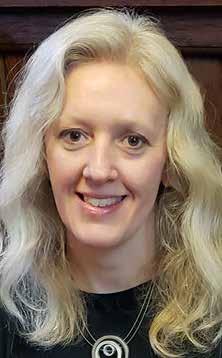
Among the many DCDC projects include conceptual design for the Southwest Detroit Immigrant and Refugee Center (SWIRC) which pro vides free and low-cost legal services to those who need them most in the Detroit area. The Center will offer transitional family housing and small business incubator and co-working Space. Another project is the North Corktown Open/Green Spaces Project where DCDC led the development of design guidelines.
“We engage the community by run ning community meetings at all scales
including town halls, stakeholder meetings,” O’Leary said. “We have also talked with community stakeholders via bus stop conversations or cookouts in the park with neighbors of the proj ects. We bring design boards or work sheets and to inform design dialog and development. In this way we get mean ingful feedback from people who are essential to the community and neigh borhood spaces.”
The DCDC also engages students in the process. Its Co-Op Program hires two-to-four Detroit Mercy Architecture students every semester who have a co-op work experience as part of their degree.
“Student designers work along side DCDC staff learning about com munity-engaged design by doing. We consider this part of our teaching com mitment within the school and for the next generation of community-
Christina HeximerCeara O’Learyengaged designers,” O’Leary said. “The students learn first-hand about archi tectural, urban, and landscape design, infrastructure strategy, community engagement and capacity building.”
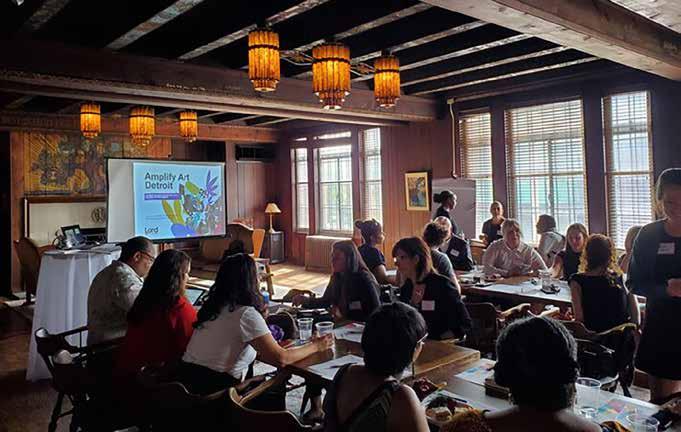
In addition to full time internship and part-time employment opportuni ties for students, the DCDC staff also teaches several classes including stu dios that give students the chance to collaborate with real clients on their own design work. Teaching within the Public Interest Design (PID) architec ture studios in the SACD curriculum every year, classes focus on a Detroit project with community and col laborative implications. DCDC staff also teach and speak in the Master of Community Development Program and lead SACD core courses.
DCDC has an office on campus in the School of Architecture, as well as an off-campus location at Neighbor hood HomeBase on McNichols Road, which opened in 2019 and is shared with the Live6 Alliance and hosts a range of community programs.


The award-winning DCDC began in 1993 when University of Detroit Mercy School of Architecture Dean Stephen Vogel introduced the idea of a design center housed within an academic context. Father Terrence Curry, an architect and full-time fac ulty member, launched a Neighbor hood Design Studio in which students learned the practice of community design by working with neighborhood leaders. The studio evolved into a full-
service architectural design center in 1994. Over the last 28 years DCDC has worked with nearly 300 partners on almost 200 projects.
In 2021, the DCDC launched two new programs to expand its work. Through the Grassroots Design Access program, staff provide design services in collaboration with three community groups through a proposal process. “We partnered with Uni versal Health and Wellness, Avalon Village and Liberated Farms to envi sion design futures for their projects,” Heximer said. “We also joined the Kresge Innovative Projects: Detroit process to provide pre-design services for five community placemaking proj ects, supporting partners in next steps to launch their design initiatives.”
In addition, the two-year Neigh borhood Resilience and Health Equity Planning for Detroit Neighborhoods
project will help communities plan for challenges related to climate, health, and other pressures. Building on existing assets and advocating for resources to support residents, and targeted on eastside’s Good Stock area and Southwest Detroit, this proj ect will result in actionable steps for neighborhoods to benefit existing residents and communities of color.
More student opportunities are also planned. “In 2022 we are launching two new programs to expand access to public interest design training—a young professional fellowship and summer high school internship program,” Hex imer said. “Through these opportuni ties we have a wide range of activities to have students in the trenches and learn hands on how to help design and build tomorrow’s communities.”
For more information on the DCDC, please visit dcdc.udm.org.

How are the death of an Ohioan 110 years ago, drinking water, Green field Village, World War II bomber production, a 117-year old Detroit company, and The Engineering Society of Detroit (ESD) connected?
The Ohioan who died 110 years was Wilbur Wright, one of America’s greatest inventors and, at his death, one of the most respected people in the world, having demonstrated human flight in the U.S. and Europe. Wilbur Wright died of waterborne typhoid fever at the young age of 45.
In the early 20th century, water borne typhoid fever was an epidemic. In 1908, chlorinated water was sup plied for the first time on a permanent basis to a large municipality: Jersey City, resulting in a dramatic decrease in local typhoid fever. Within a decade, drinking water chlorination had spread to practically every large city in America, and was hailed as the most important human health measure ever introduced. Sadly, too late for the remarkable Wilbur Wright.
Nonetheless, sanitary engineers solved the typhoid fever epidemic. A 2004 study concluded that filter ing and chlorinating drinking water was responsible for “nearly half of the total mortality reduction in major cities, three-quarters of the infant mortality reductions, and nearly twothirds of the child mortality reduc tions.” In 1997, Life magazine wrote: “The filtration of drinking water plus the use of chlorine is probably the most significant public health advance of the millennium.”
By 1912, the Detroit Water Board was chlorinating drinking water to

its customers. Unfortunately, treat ment of wastewater lagged by several decades, so downriver water users continued to be affected by untreated Detroit sewage. Clarence W. Hubbell, whose engineering company, Hubbell, Roth, & Clark (HRC), is now 117 years old, was a primary author of a 1916 sewage disposal report that would eventually guide Detroit’s wastewater treatment, and he was also instru mental in Detroit’s Belle Isle drinking water intake. Clarence was a founding member of ESD, and his great-grand son, George Hubbell, a former presi dent of HRC, is an ESD Fellow.
Two buildings where Orville and Wilbur Wright spent more time than anywhere else were their family home and bicycle shop in Dayton, Ohio. Both of these buildings were physi cally moved to Henry Ford’s Green field Village, and Orville attended the formal opening on the day in 1938 that would have been Wilbur’s 71st birth day. Orville appears with ESD mem ber Henry Ford and Thomas Edison in the grand opening portrait displayed at The Henry Ford Museum.
The Wright brothers great inven tion, the airplane, was used as an instrument of war in World War I and II. The Ford Motor Company Willow Run bomber plant, where over 8,000 B-24 bombers were pro duced, was at the apex of Ameri ca’s “Arsenal of Democracy.” HRC designed the water and wastewater infrastructure for this plant. When asked about the use of airplanes in war, Orville stated: “We dared to hope we had invented something that would bring lasting peace to the earth. But we were wrong…No, I don’t have any regrets about my part in the
A detail from ESD’s first membership ros ter, published in 1899, showing member Clarence W. Hubbell among the 92 listed.
invention of the airplane, though no one could deplore more than I do the destruction it has caused. I feel about the airplane much as I do in regard to fire. That is I regret all the terrible damage caused by fire, but I think it is good for the human race that some one discovered how to start fires and that we have learned how to put fire to thousands of important uses.”
Something along these lines could also be said about chlorine in water. In and of itself, chlorine in drink ing water isn’t ideal, and too much chlorine can be dangerous, but a very small amount protects against far worse health hazards in the form of infectious disease. Our drinking water today may not be perfect but we need not worry about dying from typhoid fever and other waterborne diseases as Americans once did.
Such is the curious connection of invention, inventors, engineering, southeast Michigan, and ESD.
Thomas Doran, FESD, PE, is an ESD Fellow and the author (as T.M. Doran) of Toward the Gleam, Terrapin, Iota, and The Lucifer Ego. He was a principal at Hubbell, Roth & Clark, president of Tetra Tech/MPS, and an adjunct professor at Lawrence Technological University.

Life – and business – is full of twists and turns. The Blues can help you navigate through this tough economy with affordable health care plans.

New plans, low premiums for you — around $250 per person, per month. It’s how we’re driving change in small business insurance.
Give your employees the protection they want without putting a huge dent in your bottom line with these new offerings:
• BlueCore PlusSM — New basic PPO plan with up to a 40% savings
• Blue Care Network Health Reimbursement Arrangement — New HMO funding option


• Blue Care Network $7,500/$15,000 high-deductible plan — New high-deductible plan

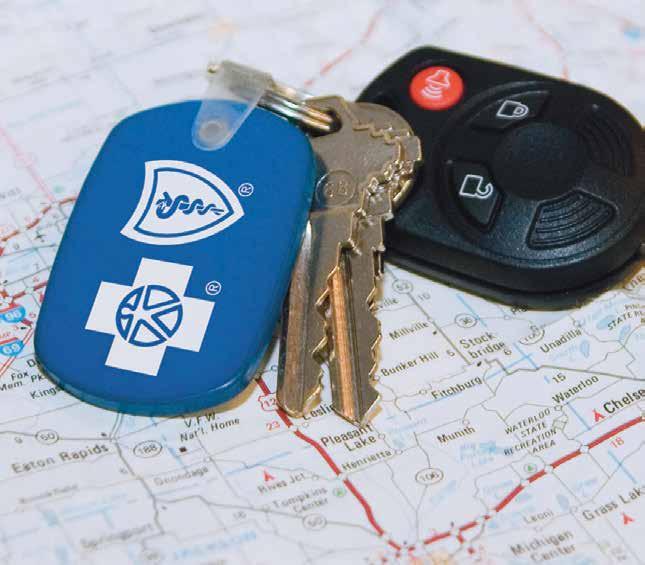
of
of
Engineering
Commissioning Assn.–Central
Construction Specifications Inst. (CSI)
Council of Supply Chain Mgmt. Professionals (CSCMP)
CREW Detroit–Commercial Real Estate Women (CREW)
Detroit Chinese Engineers Assn. (DCEA)
Detroit Soc. for Coatings Technology (DSCT)
ElectroChemical Soc. (ECS)
Engineers Without Borders (EWBUSA)
Great Lakes Renewable Energy Assn. (GLREA)
Heavy Duty Manufacturers Assn. (HDMA)
Illuminating Engineering Soc. of North America (IESNA)
Inst. of Electrical & Electronics Engineers (IEEE)
Inst. of Environmental Science & Technology (IEST)
Inst. of Industrial Engineers Greater Detroit Ch. (IIE)
Inst. of Mathematical Sciences (IMS)
Instrumentation Systems & Automation Soc. (ISA)
Int’l Council on Systems Engineering–MI Ch. (INCOSE)
Japan Business Soc. of Detroit (JBS)
Mechanical Contractors Assn. (MCA-Detroit)
Mechanical Inspectors Assn. of MI (MIAM)
Metropolitan Mechanical Inspectors Assn. (MMIA)
MI Ch. of Am. Soc. of Landscape Architects (MASLA)
MI Assn. of Environmental Professionals (MAEP)
MI Assn. of Hazardous Materials Managers (MI-AHMP)
MI Chemistry Council (MCC)
MI Interfaith Power & Light (MIPL)
MI Intellectual Property Law Assn. (MIPLA)
MI Rural Water Assn. (MRWA)
MI Soc. for Clinical Engineering (MSCE)
MI Soc. of Professional Engineers (MSPE)
MI Soc. of Professional Surveyors (MSPS)
MI Water Environment Assn. (MWEA)
MI!/usr/group (MUGORG)
National Assn. of Corrosion Engineers (NACE)
National Assn. of Women in Construction (NAWIC)
Nat. Soc. of Black Engineers–Detroit Alumni Extension (NSBE-DAE)
Net Impact Southeastern MI (NISEM)
North Am. Soc.